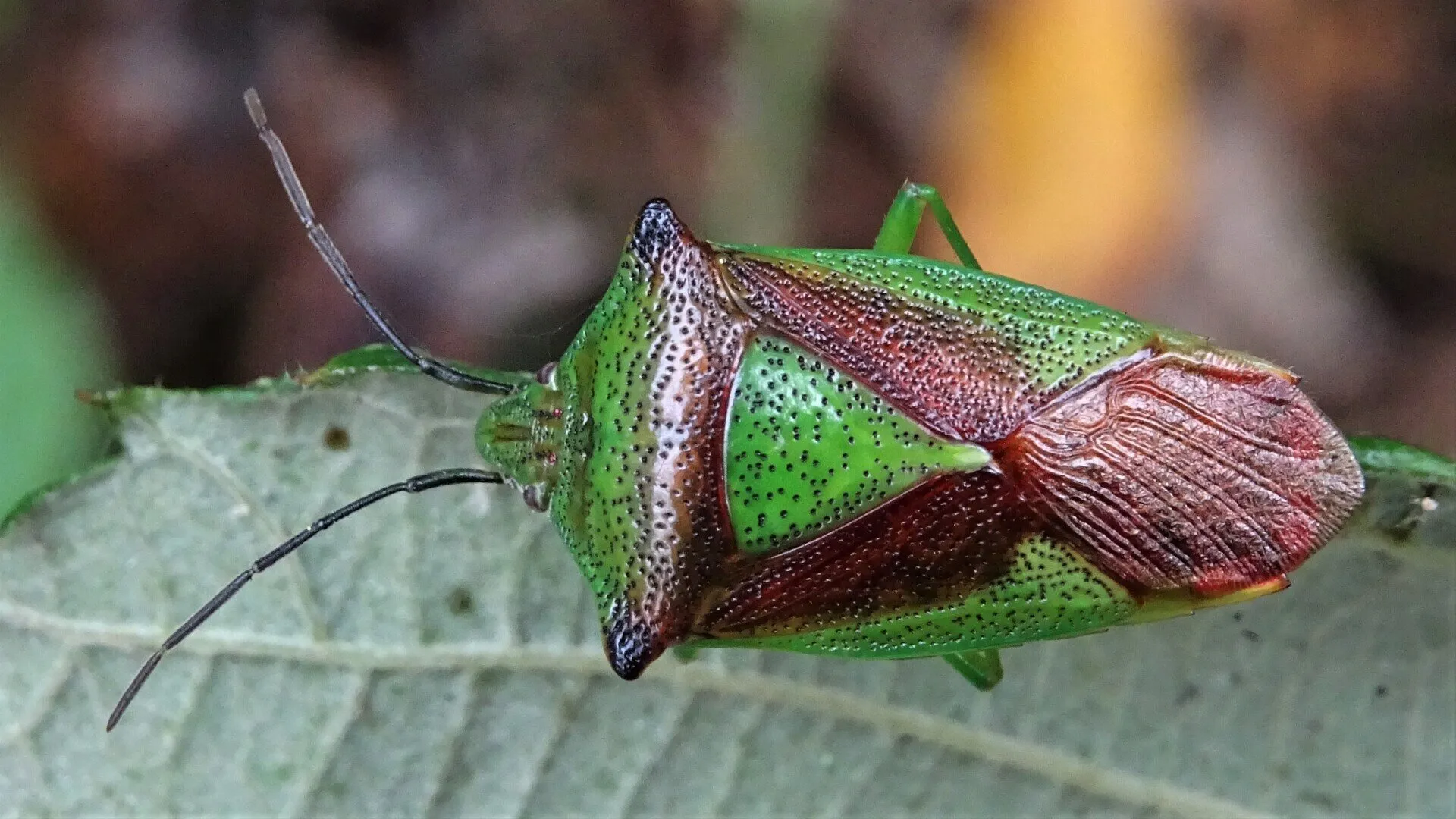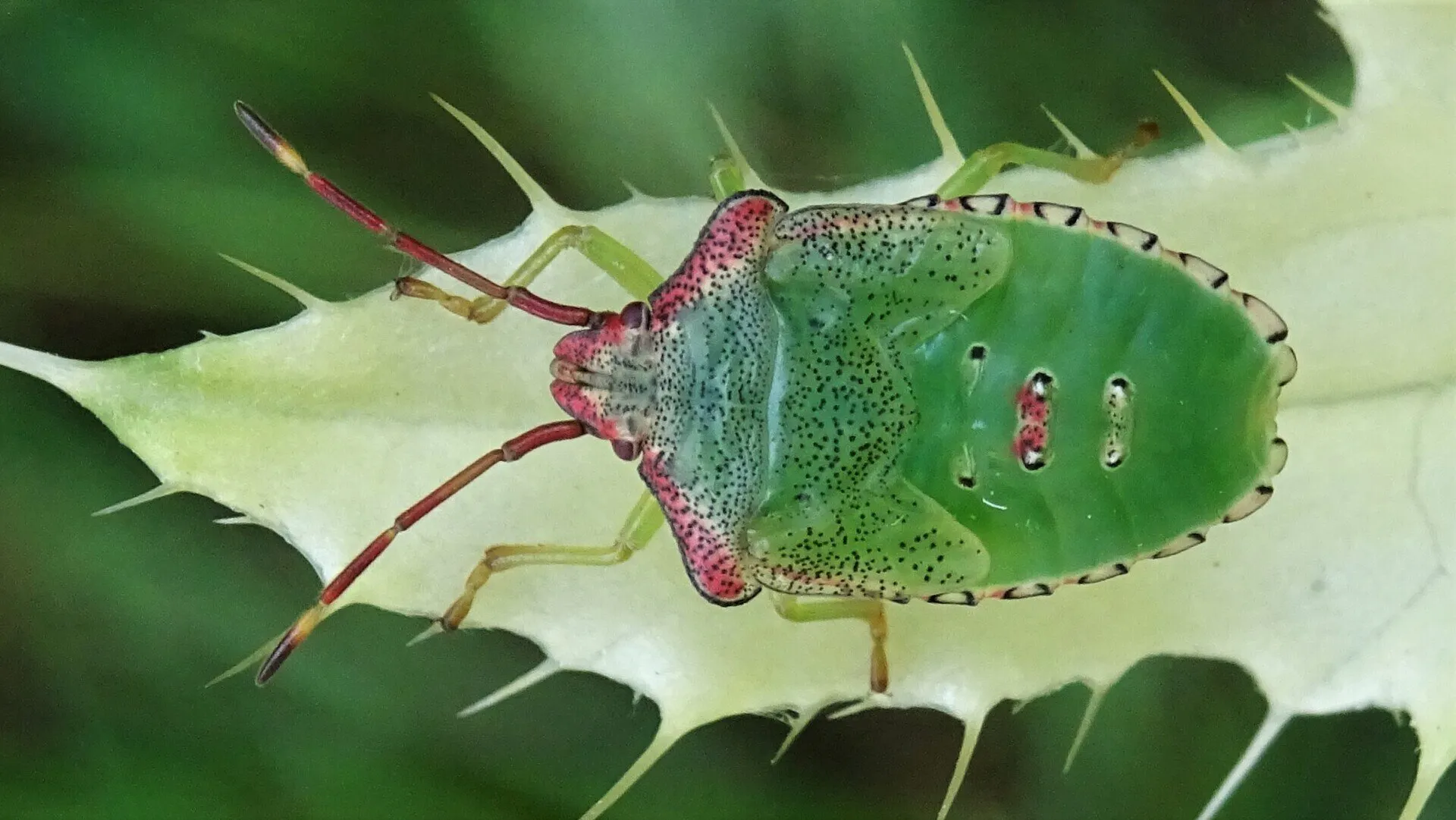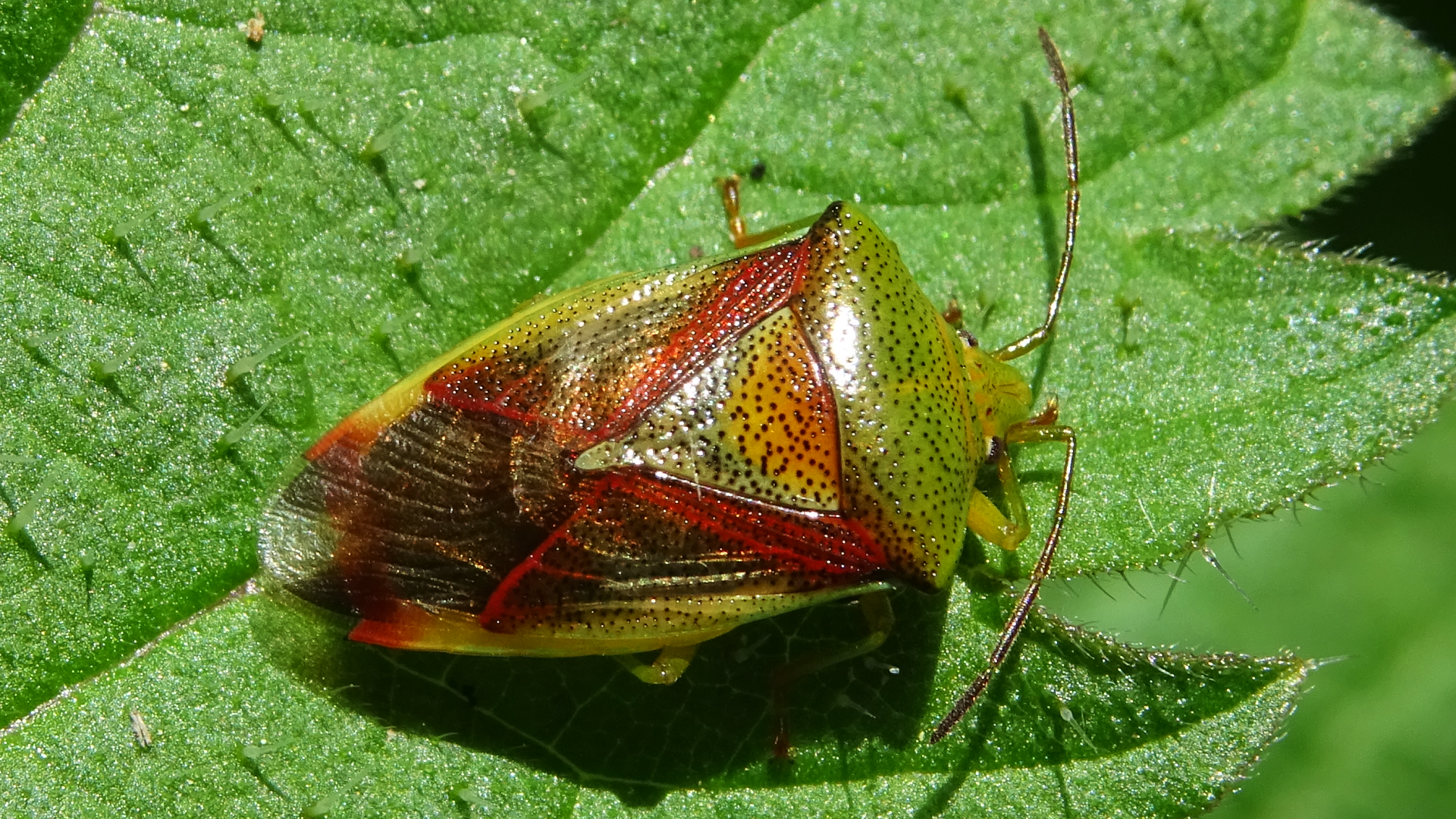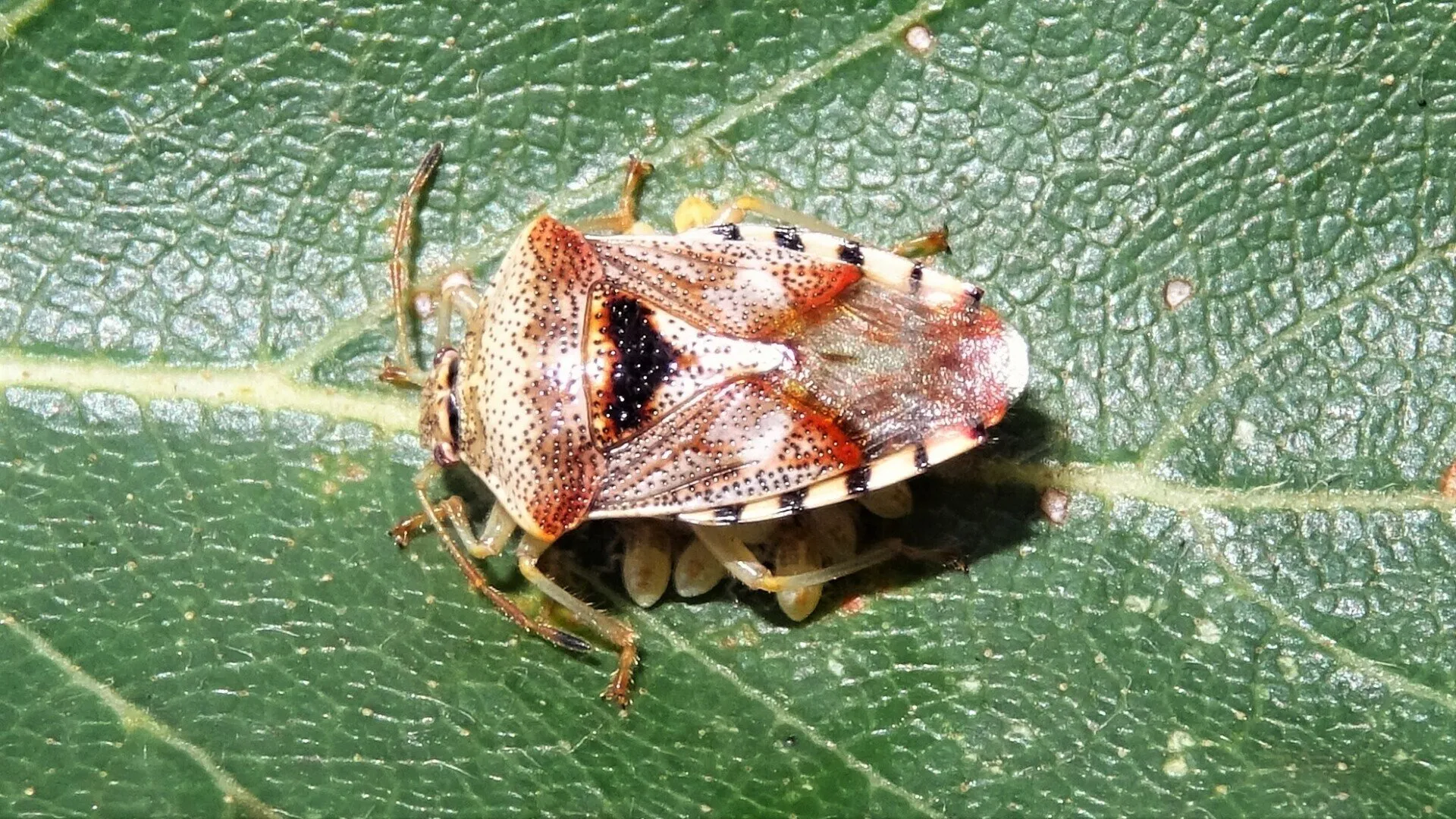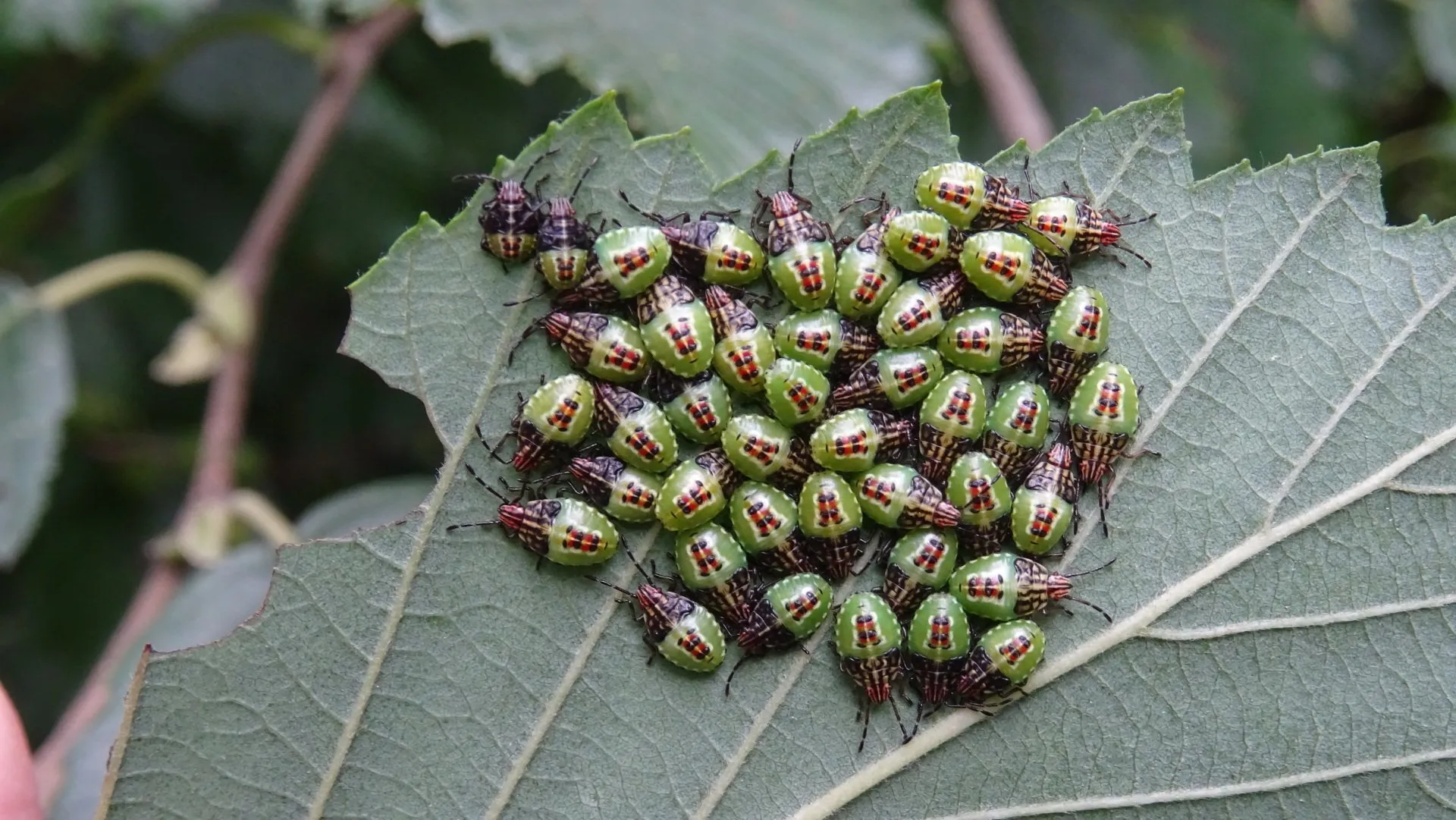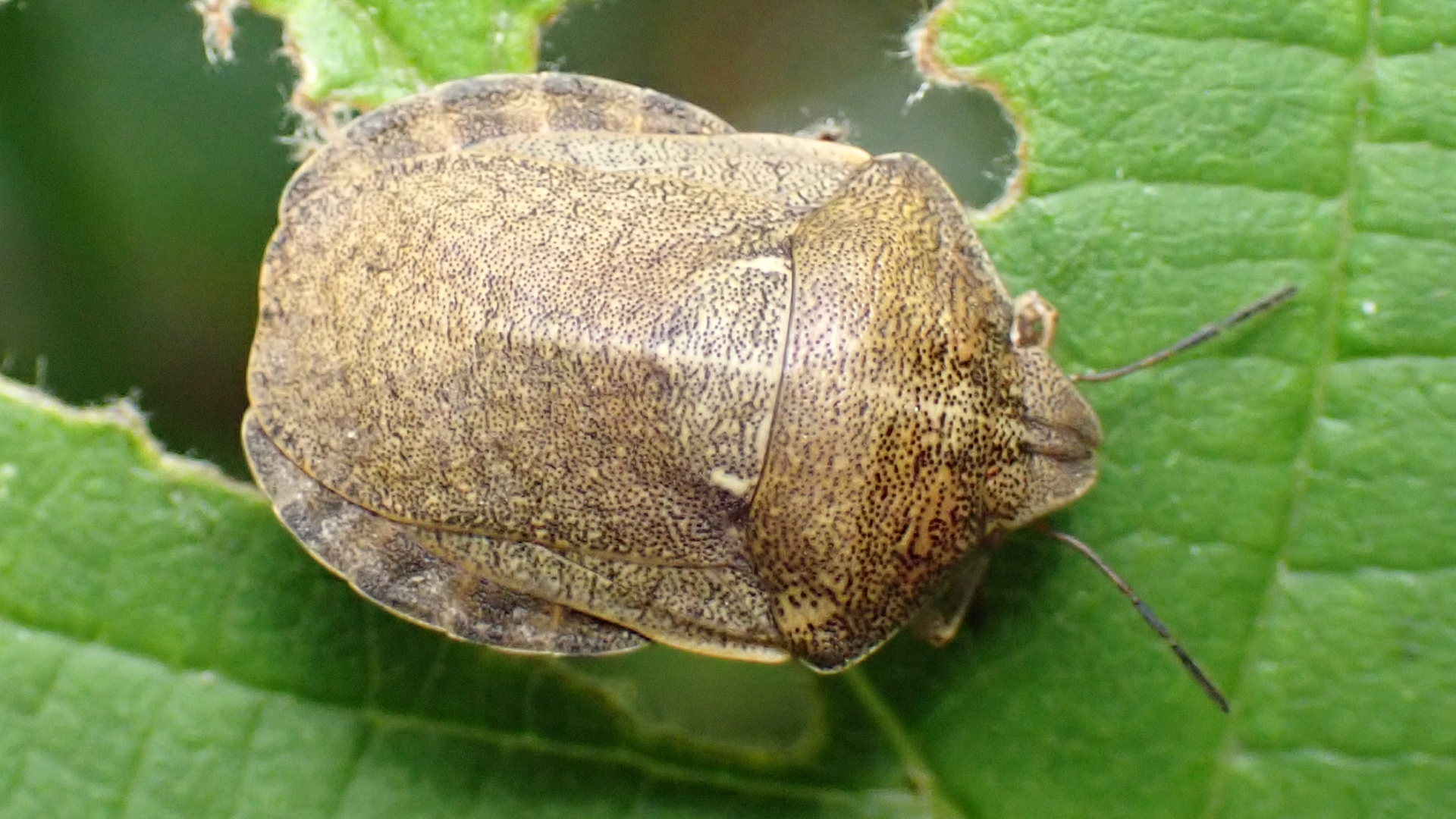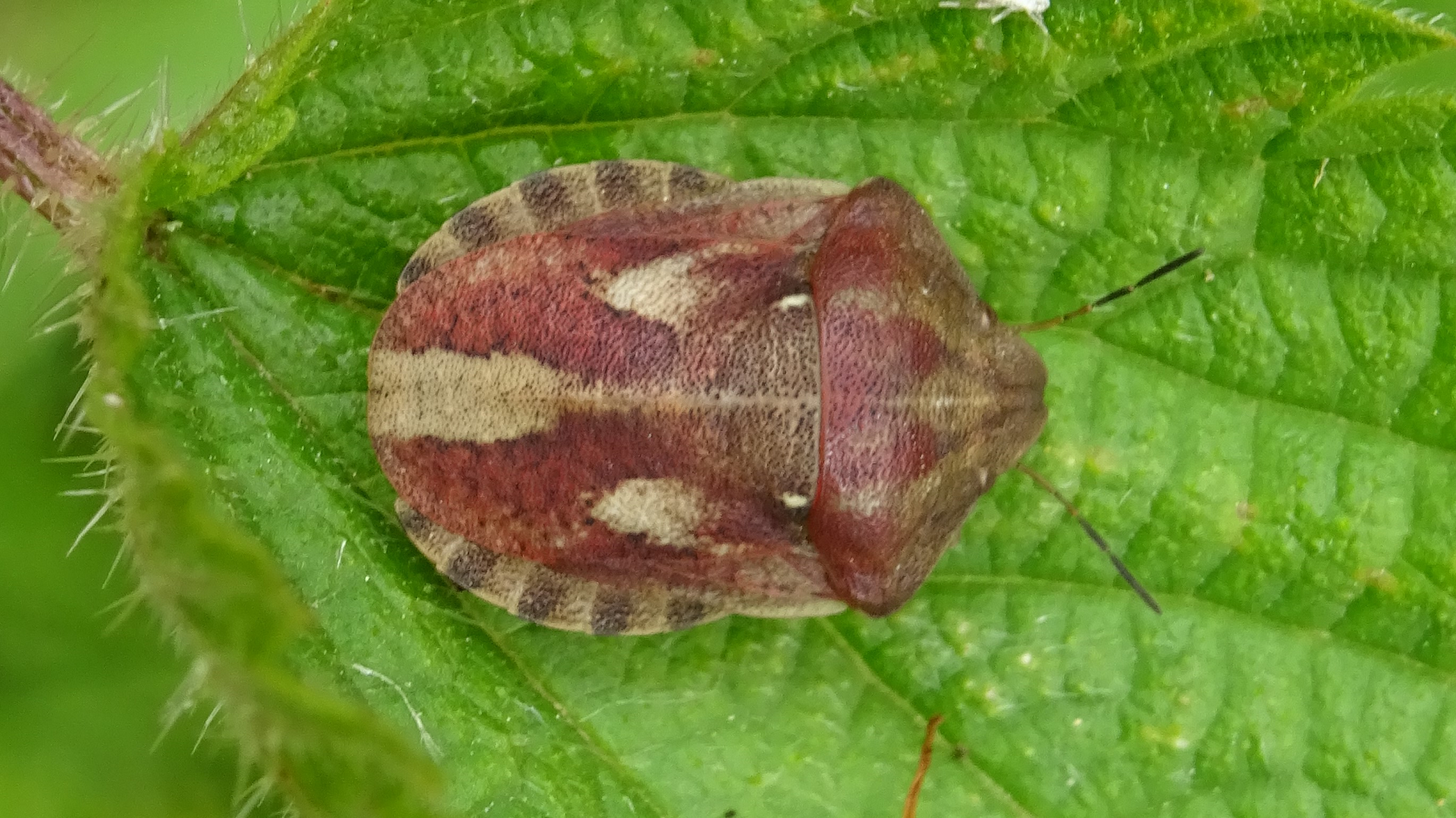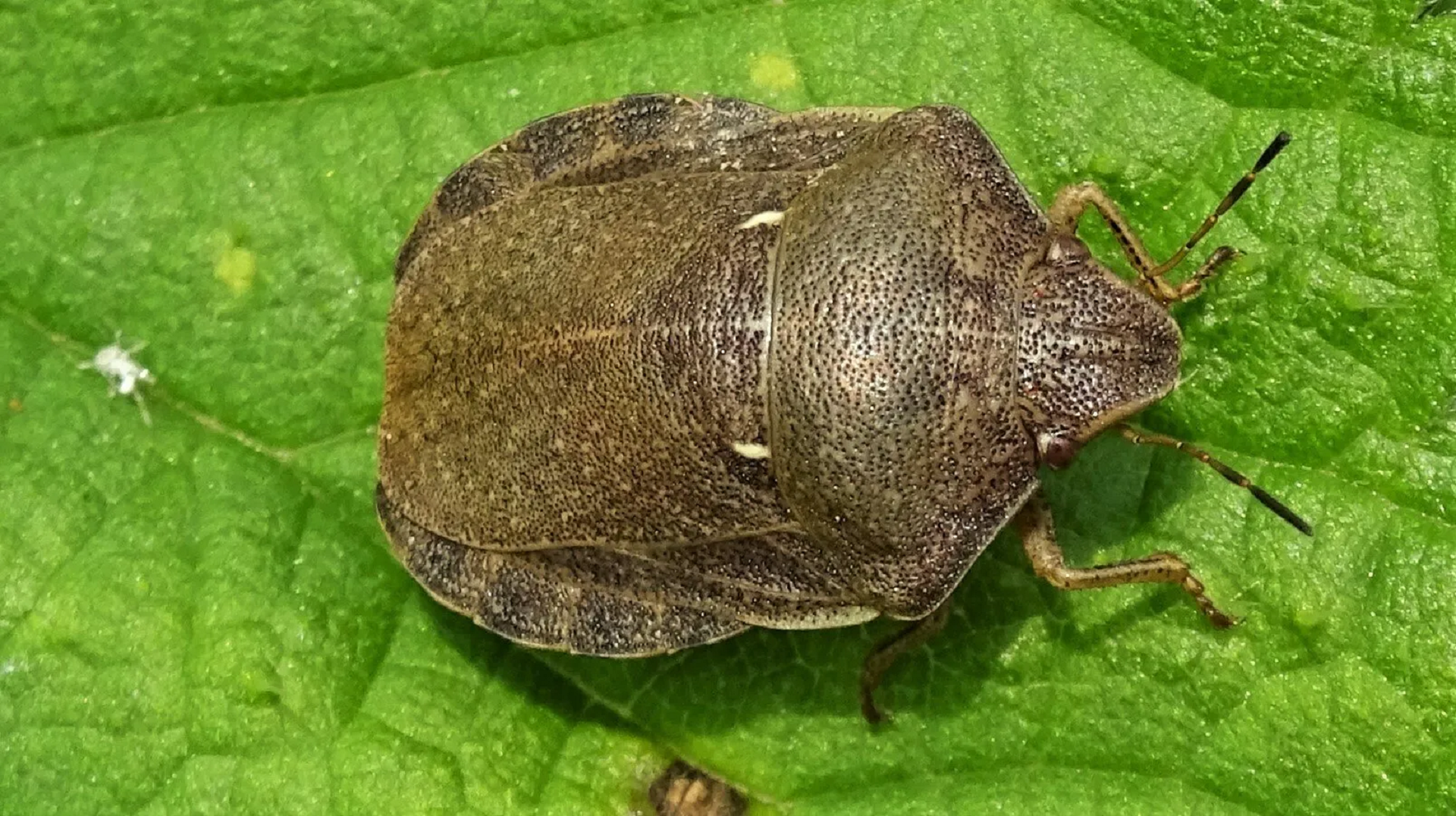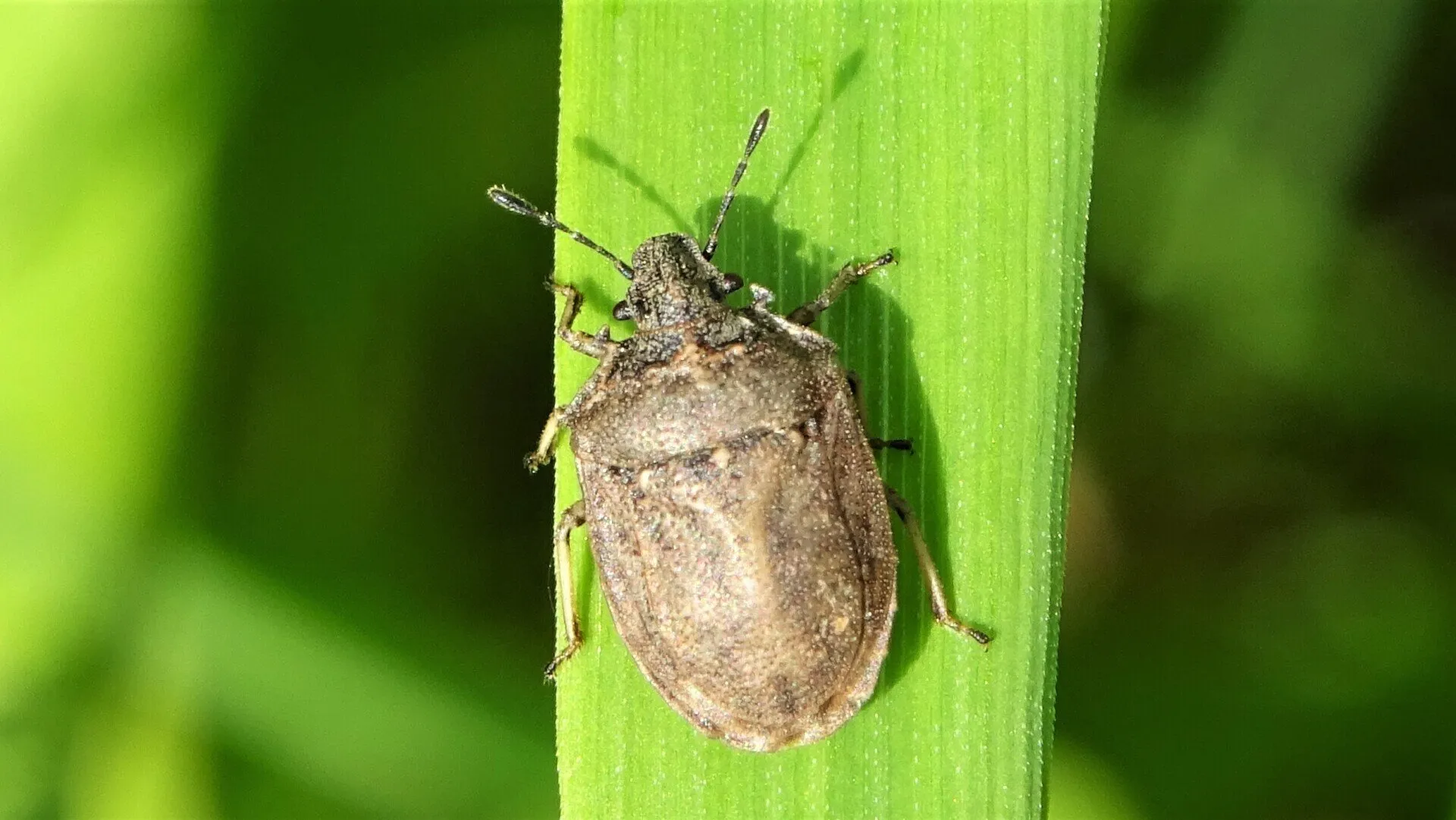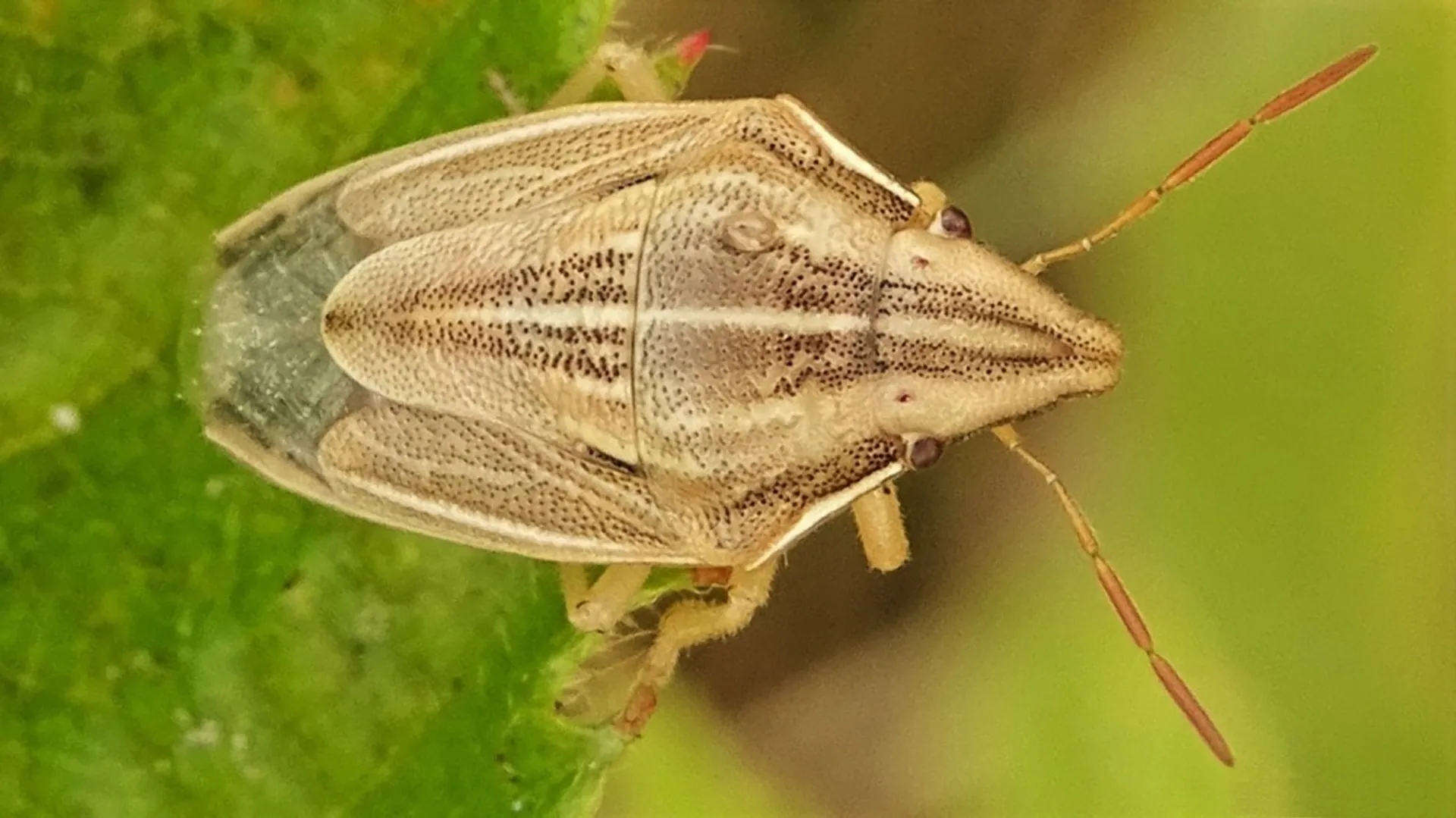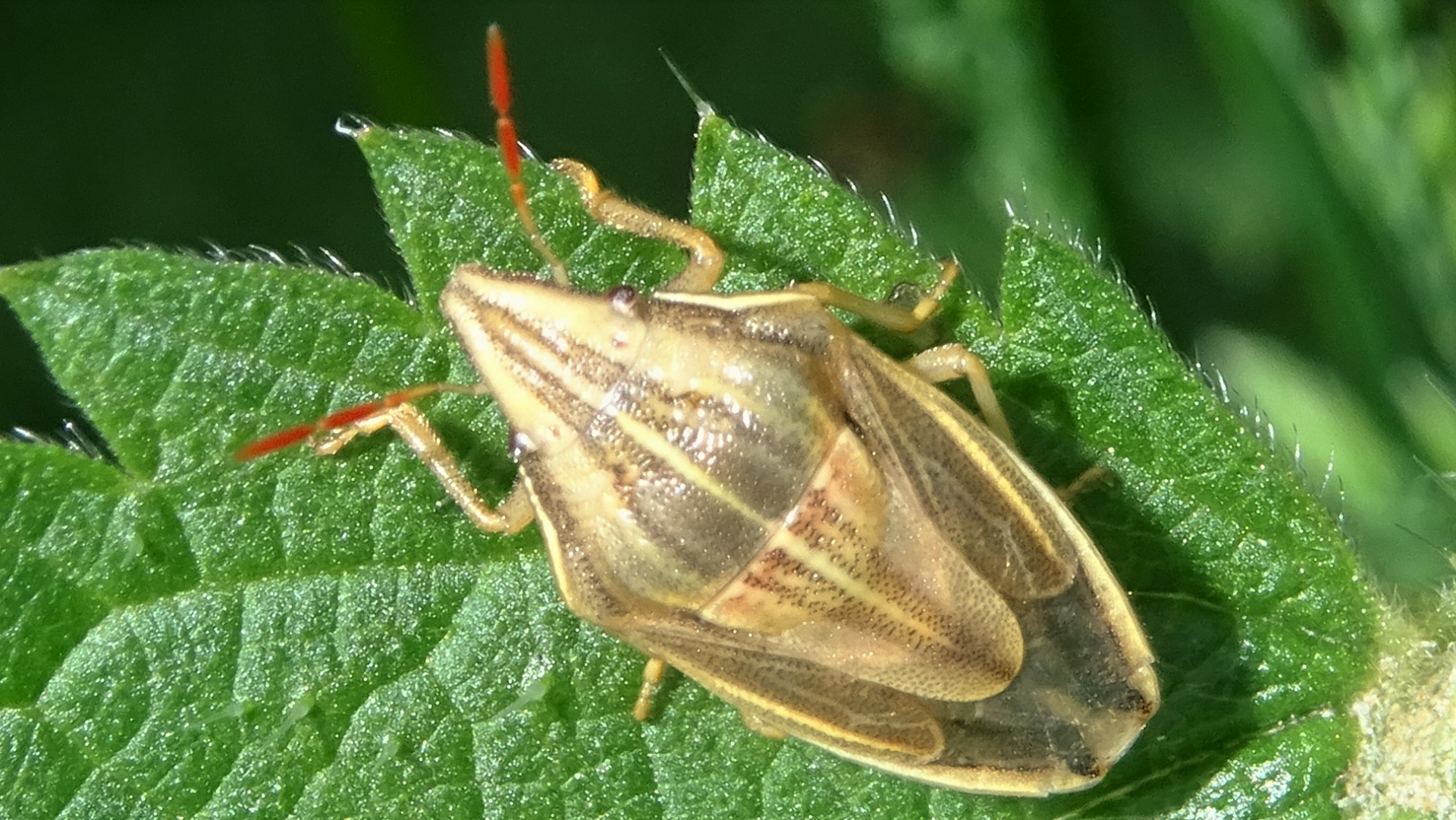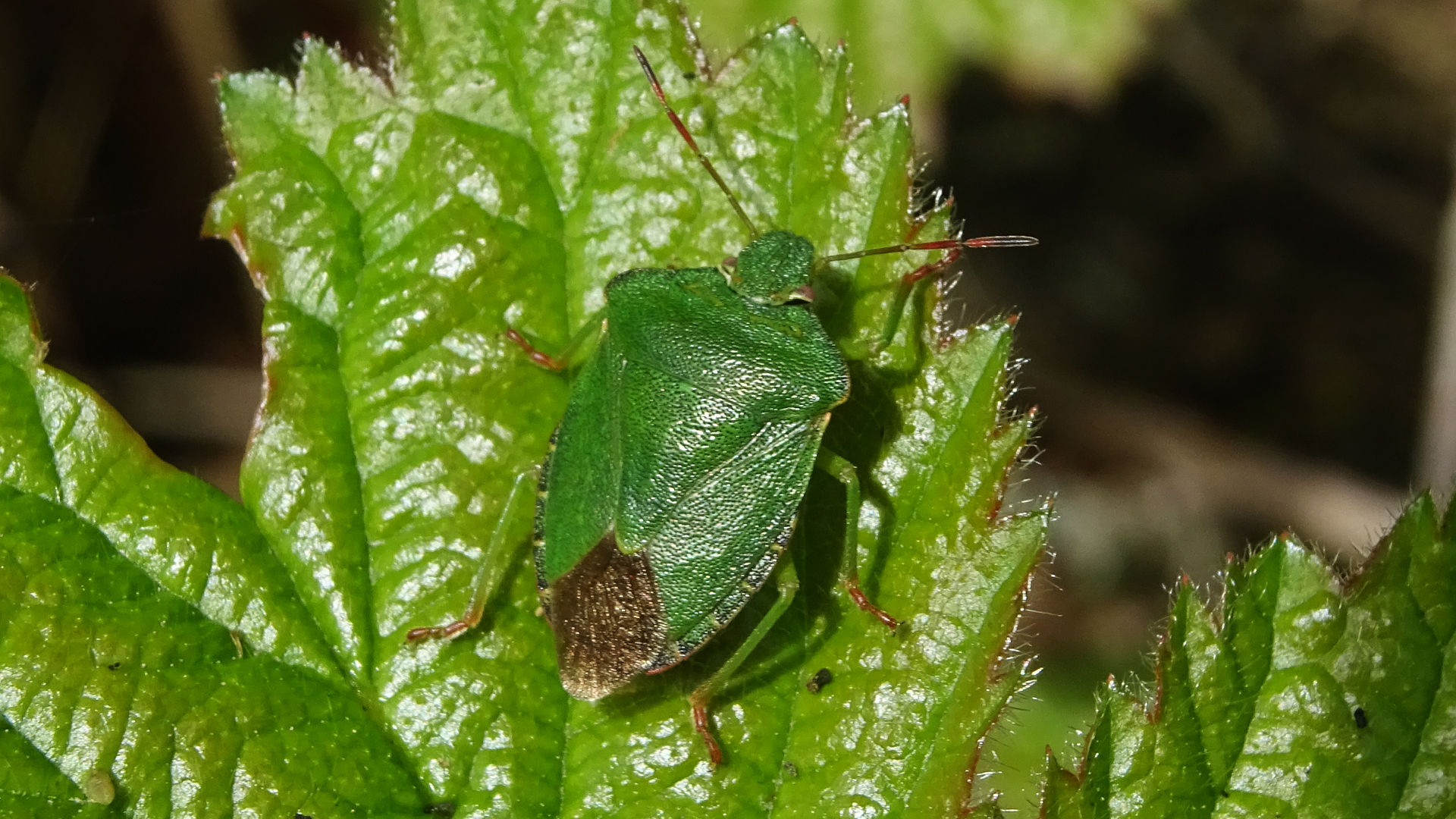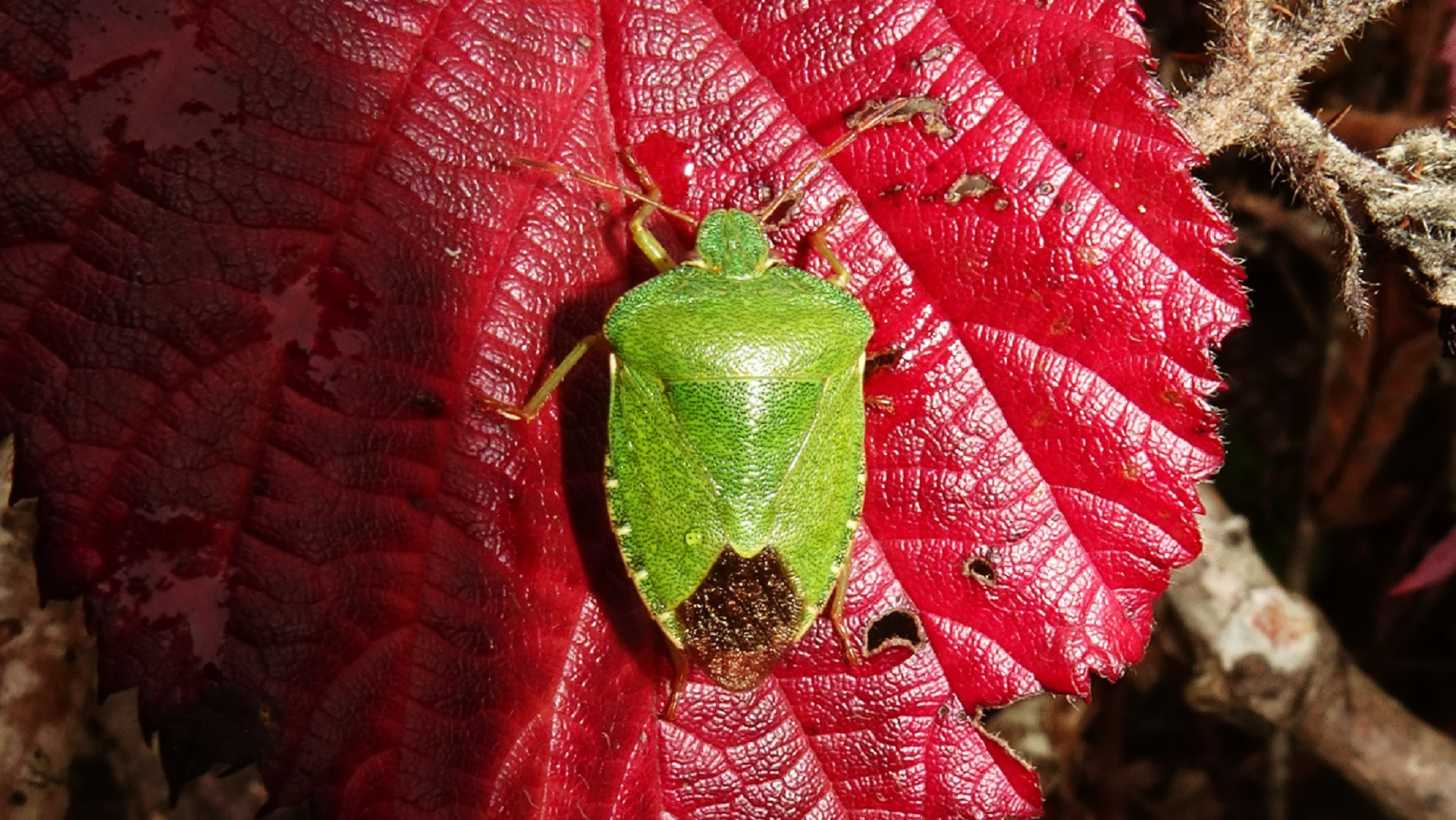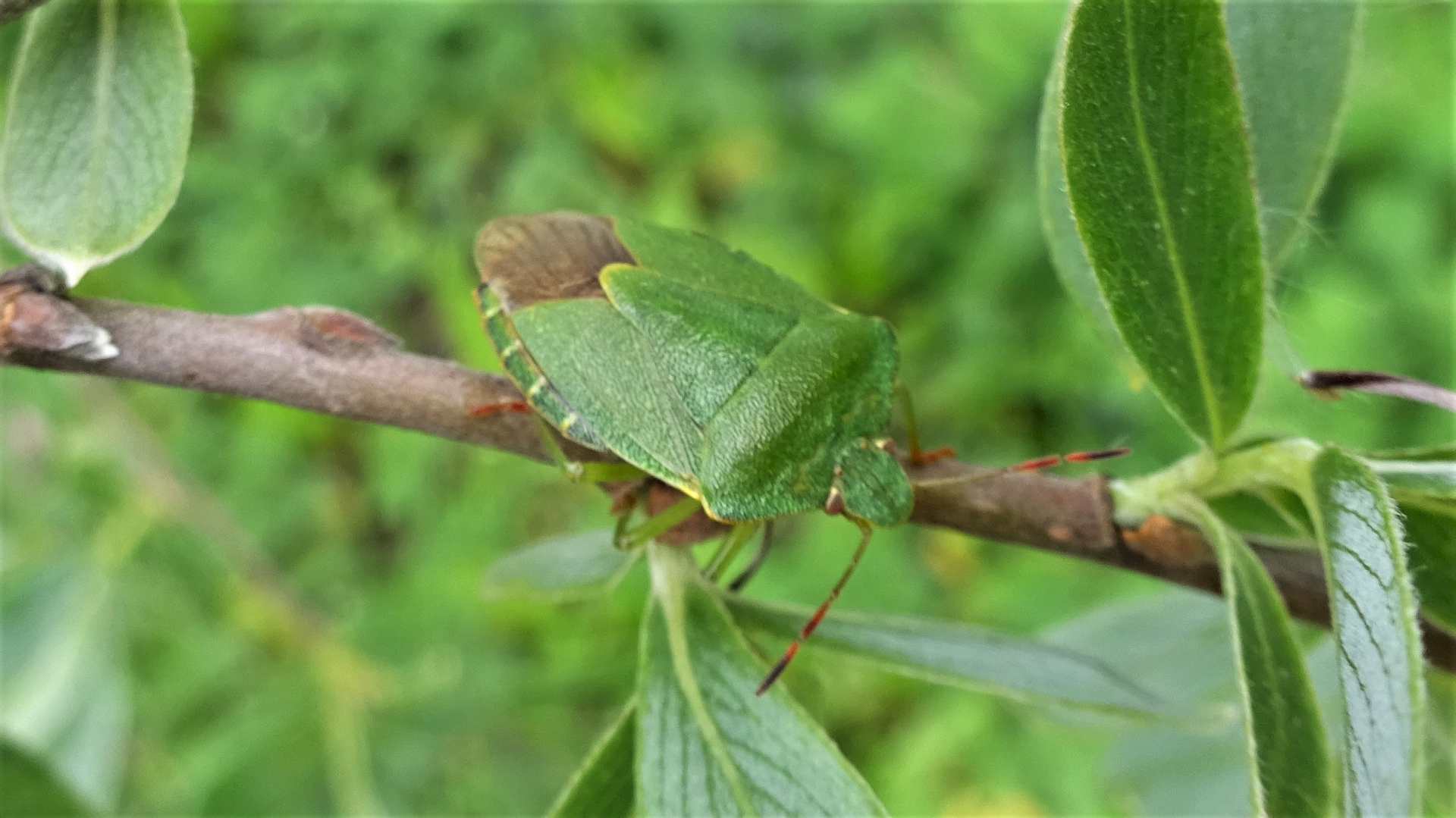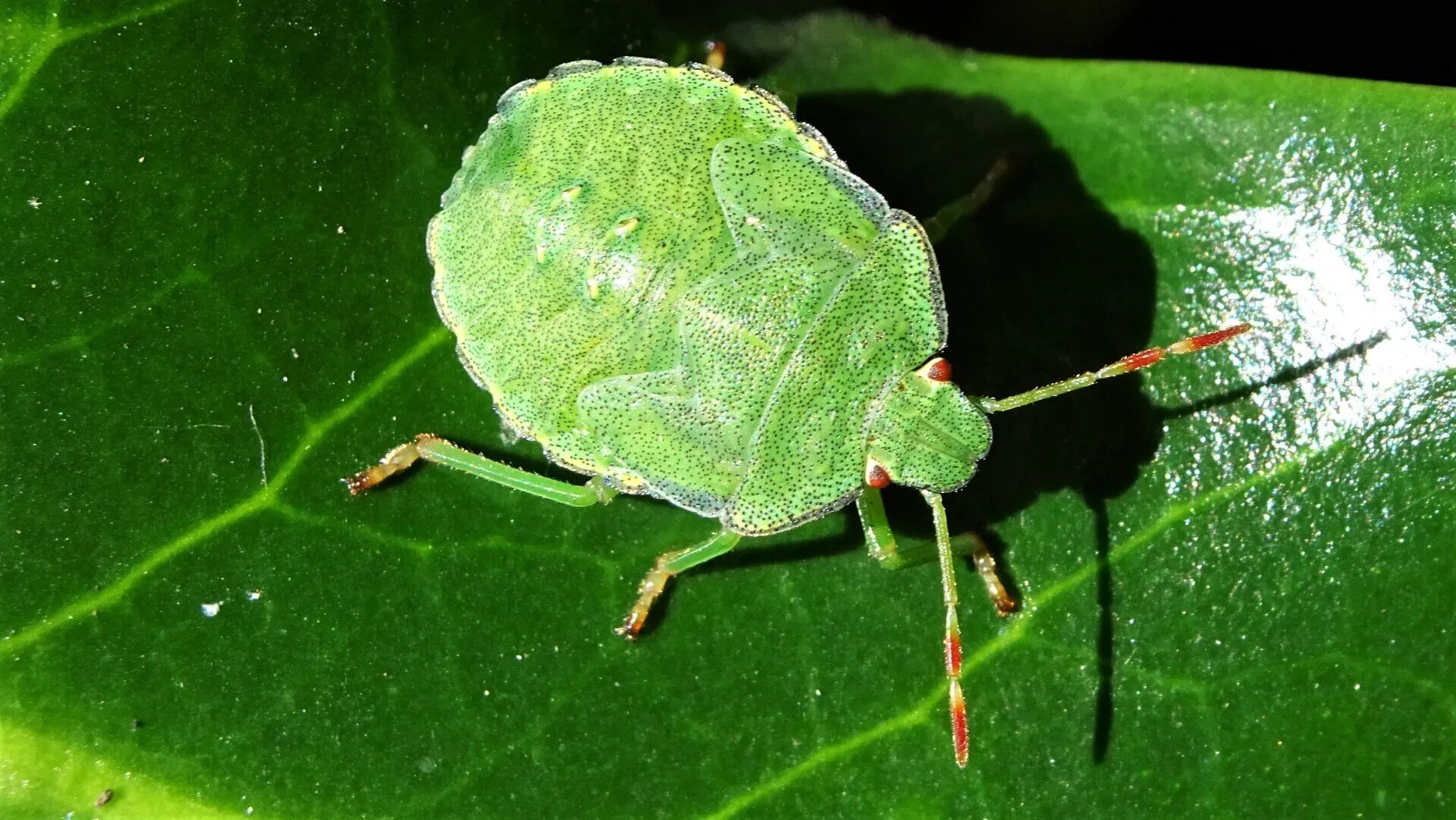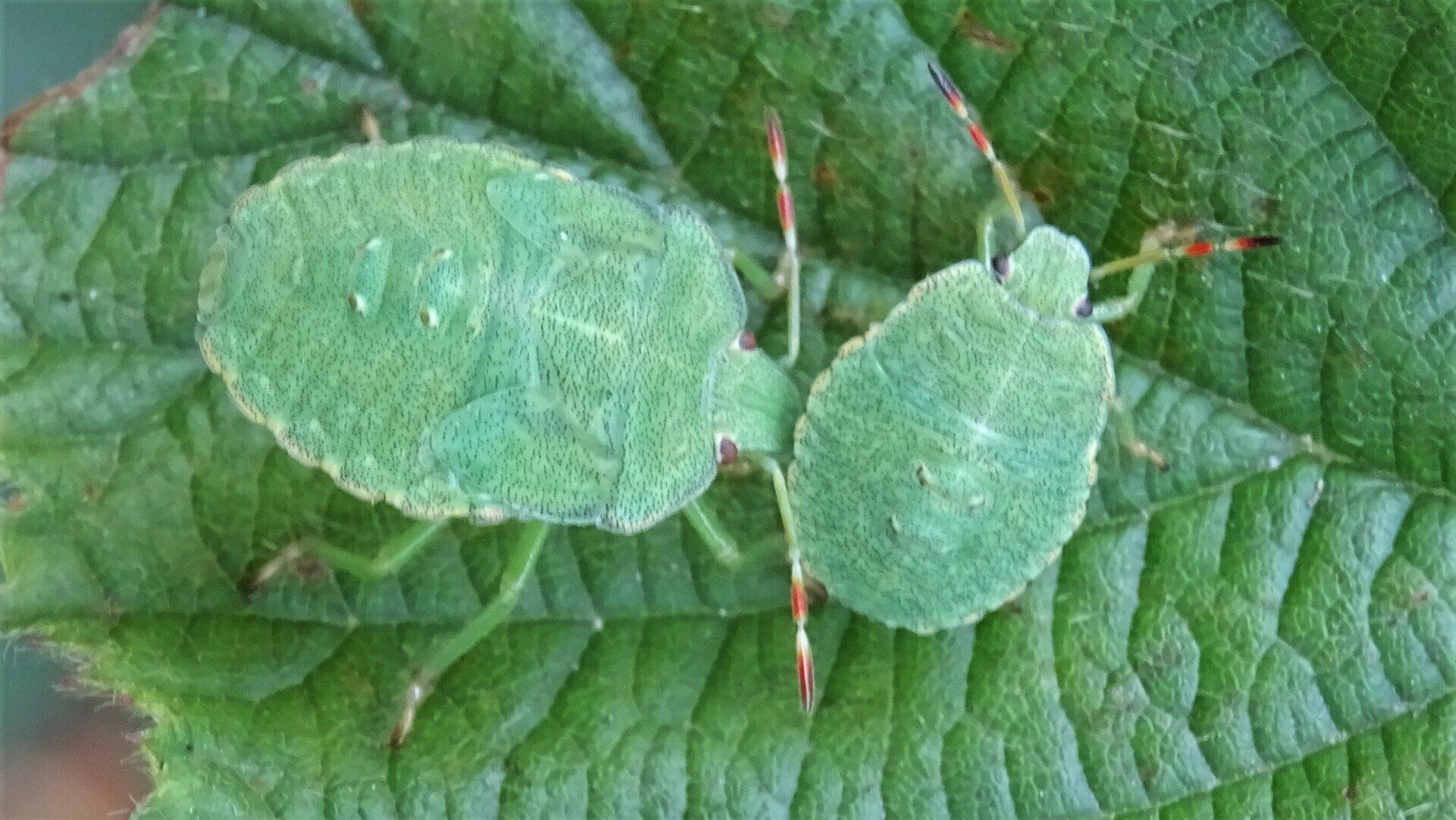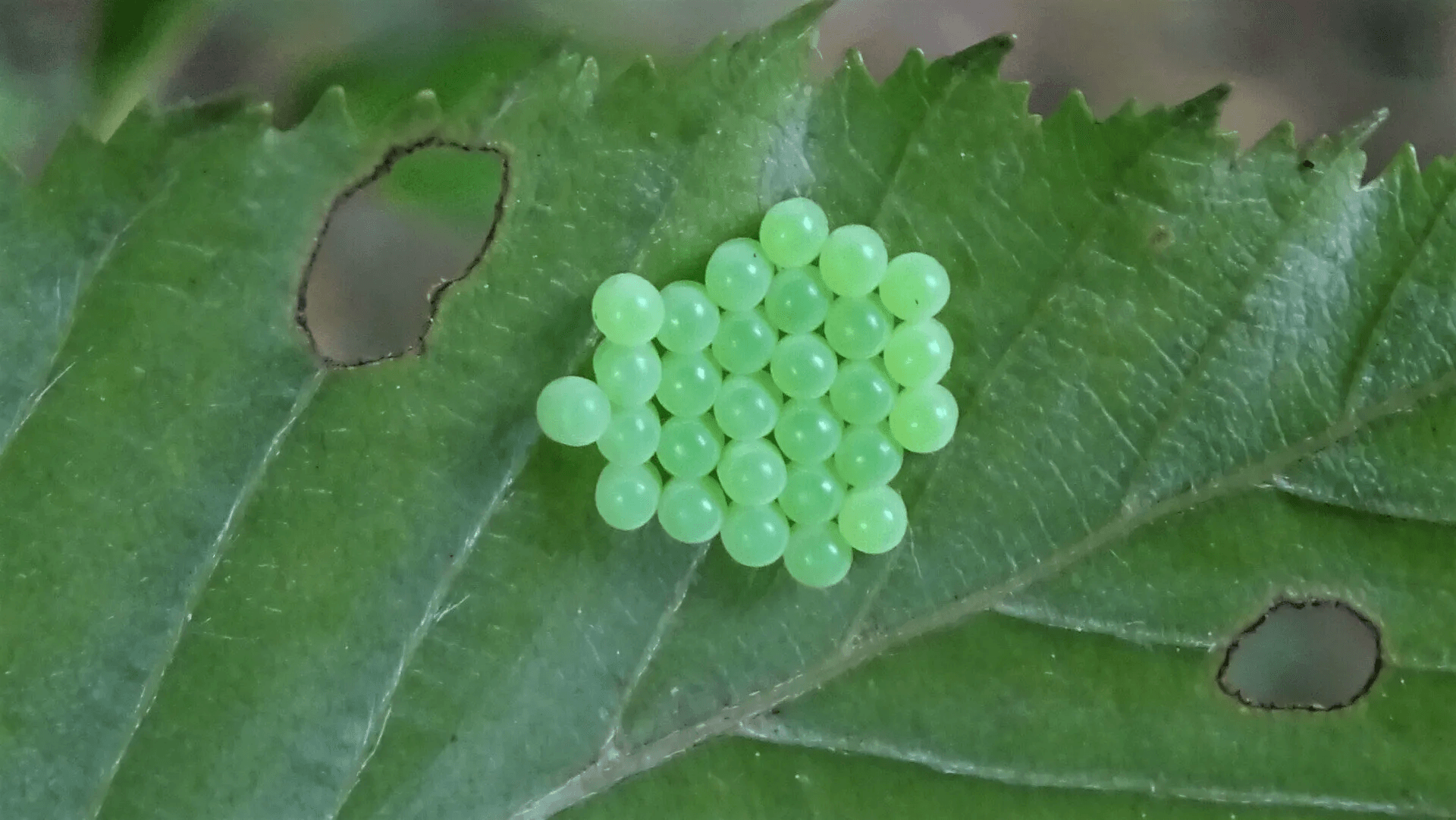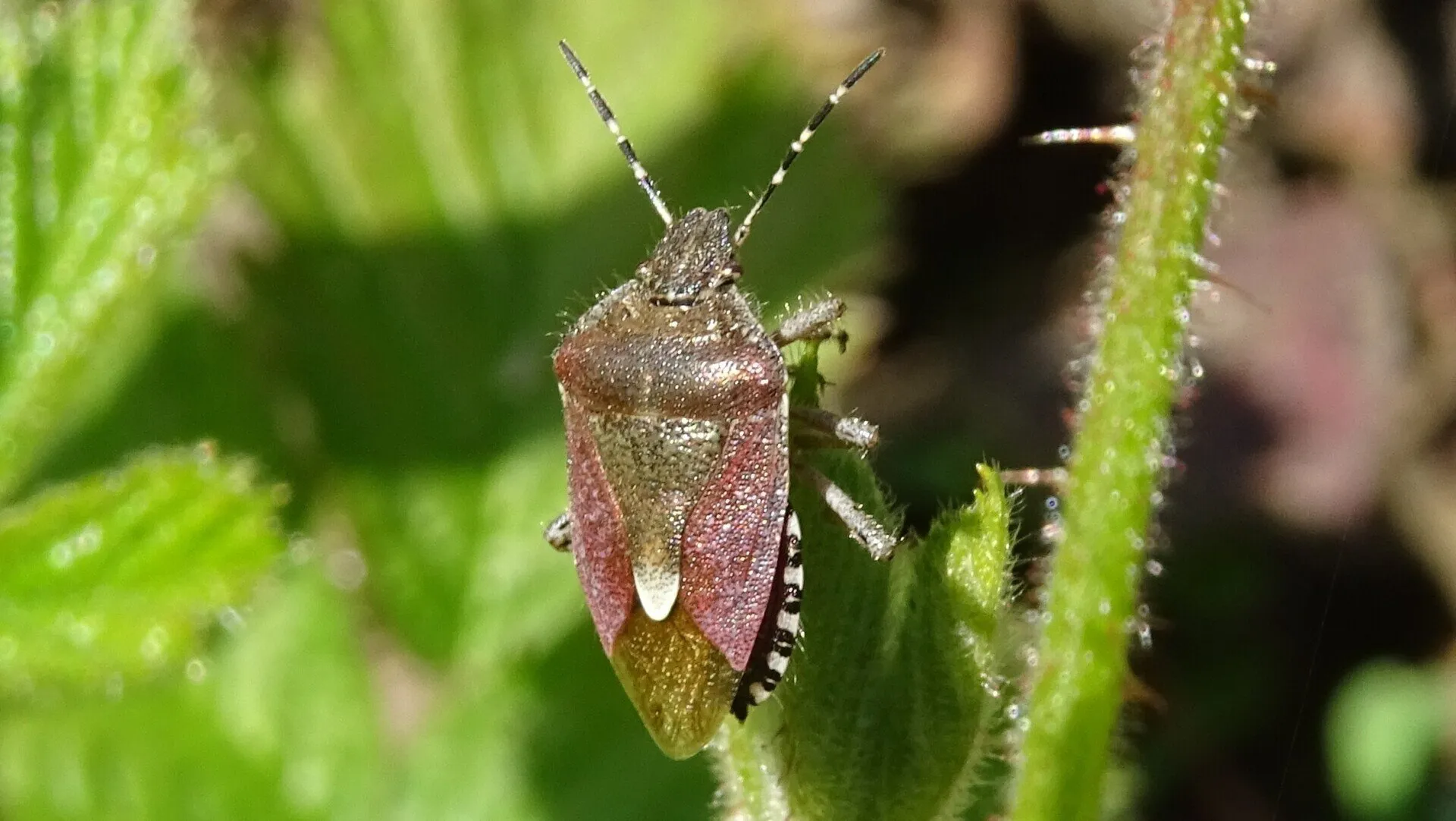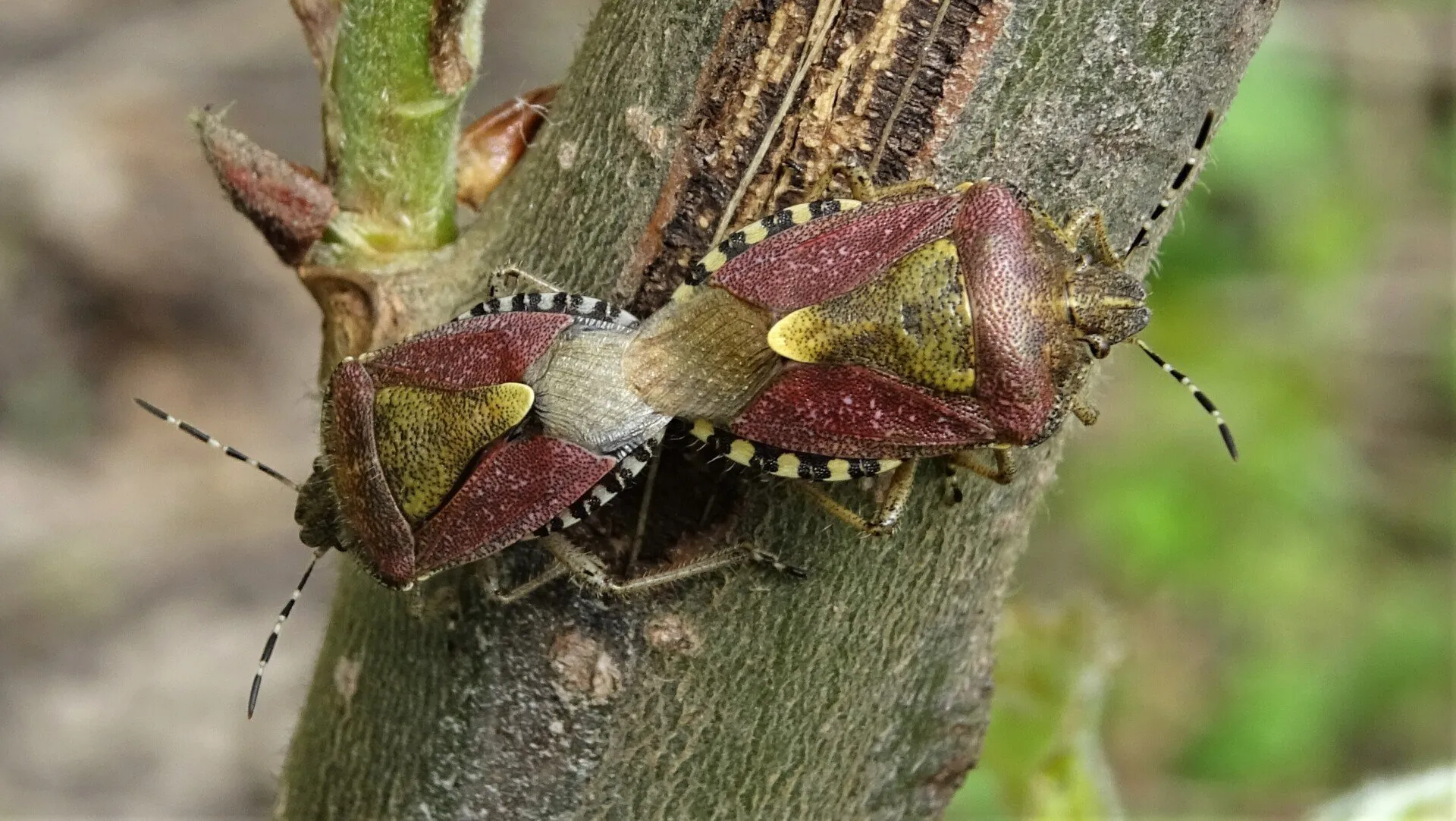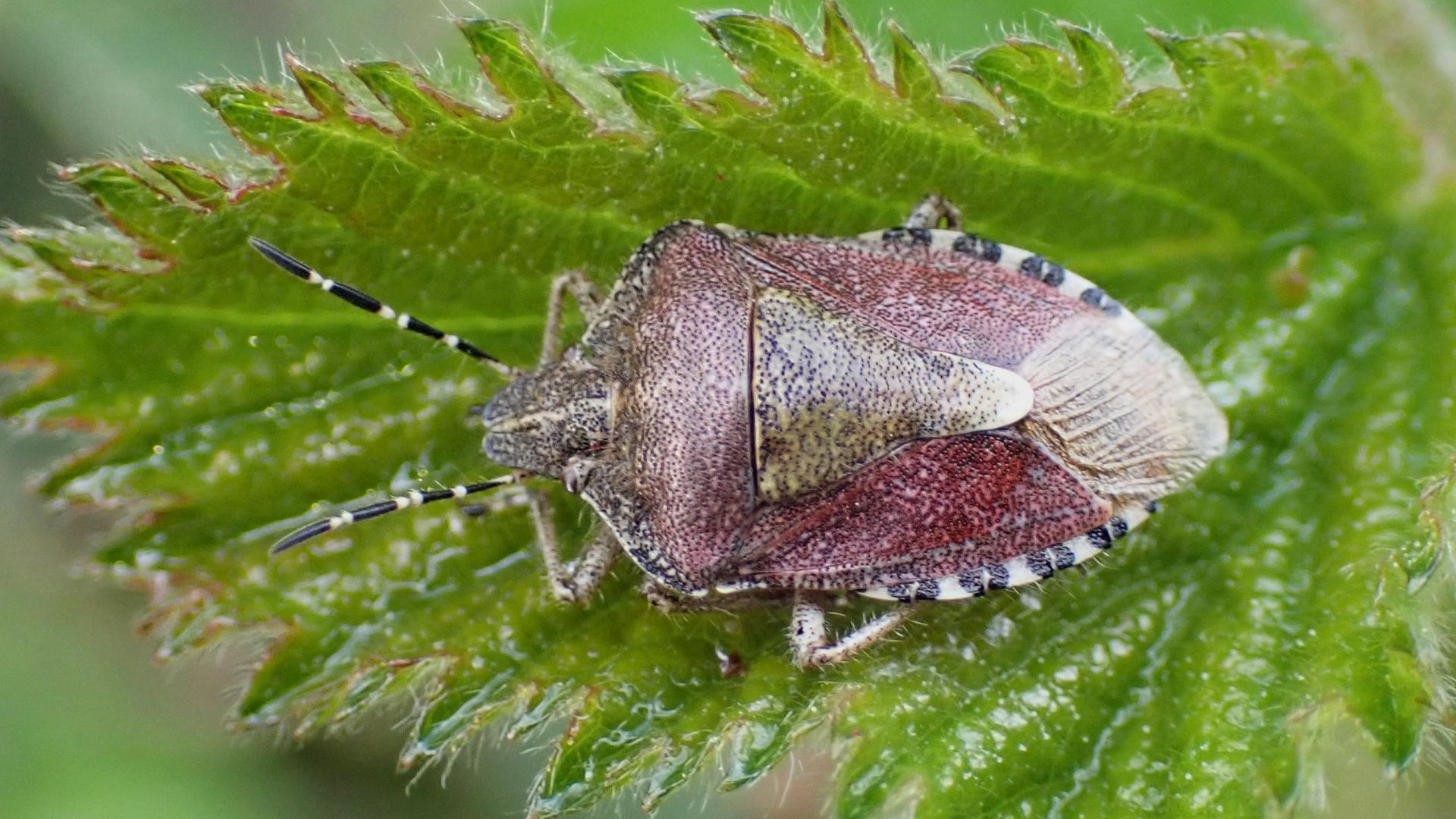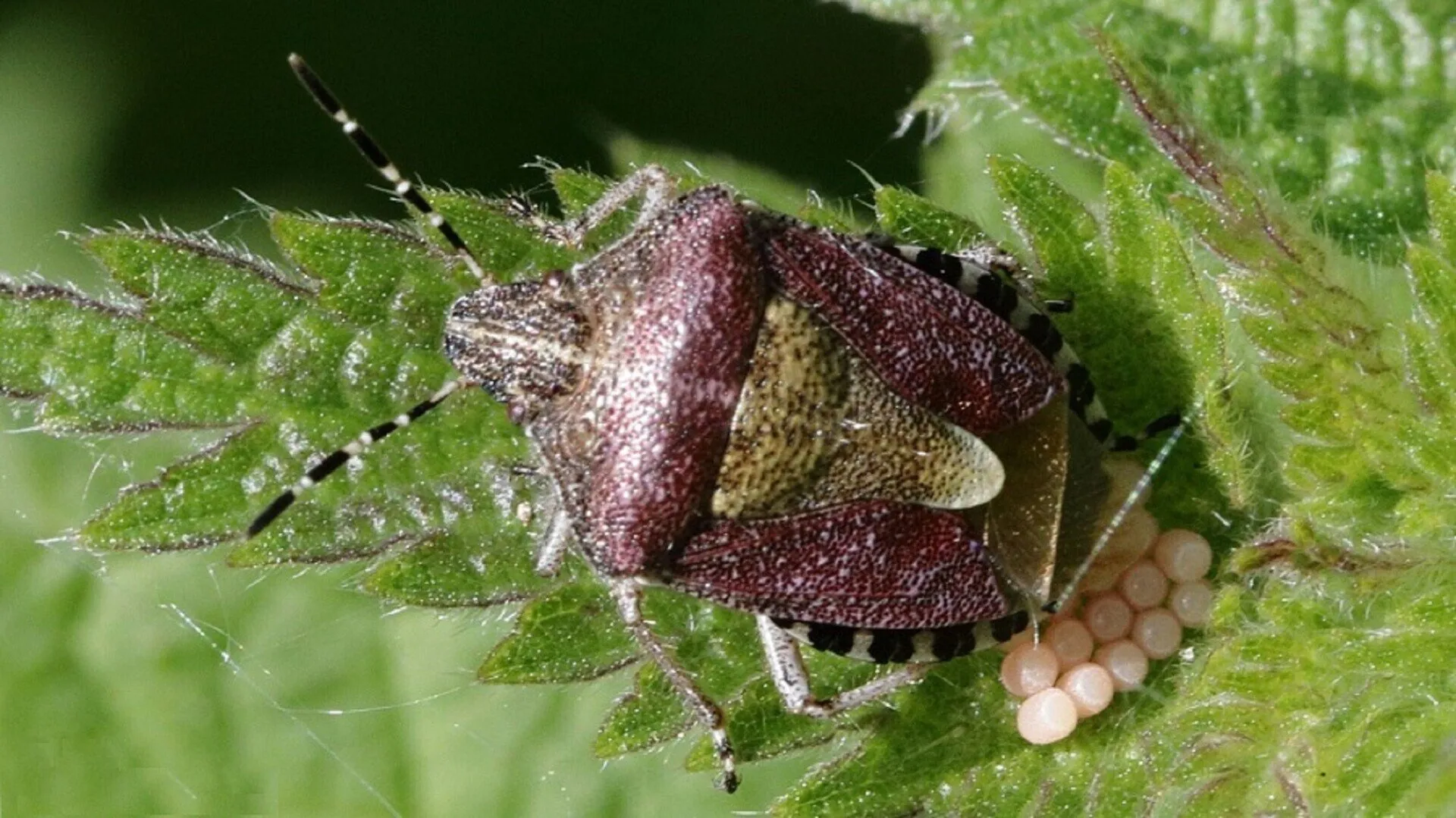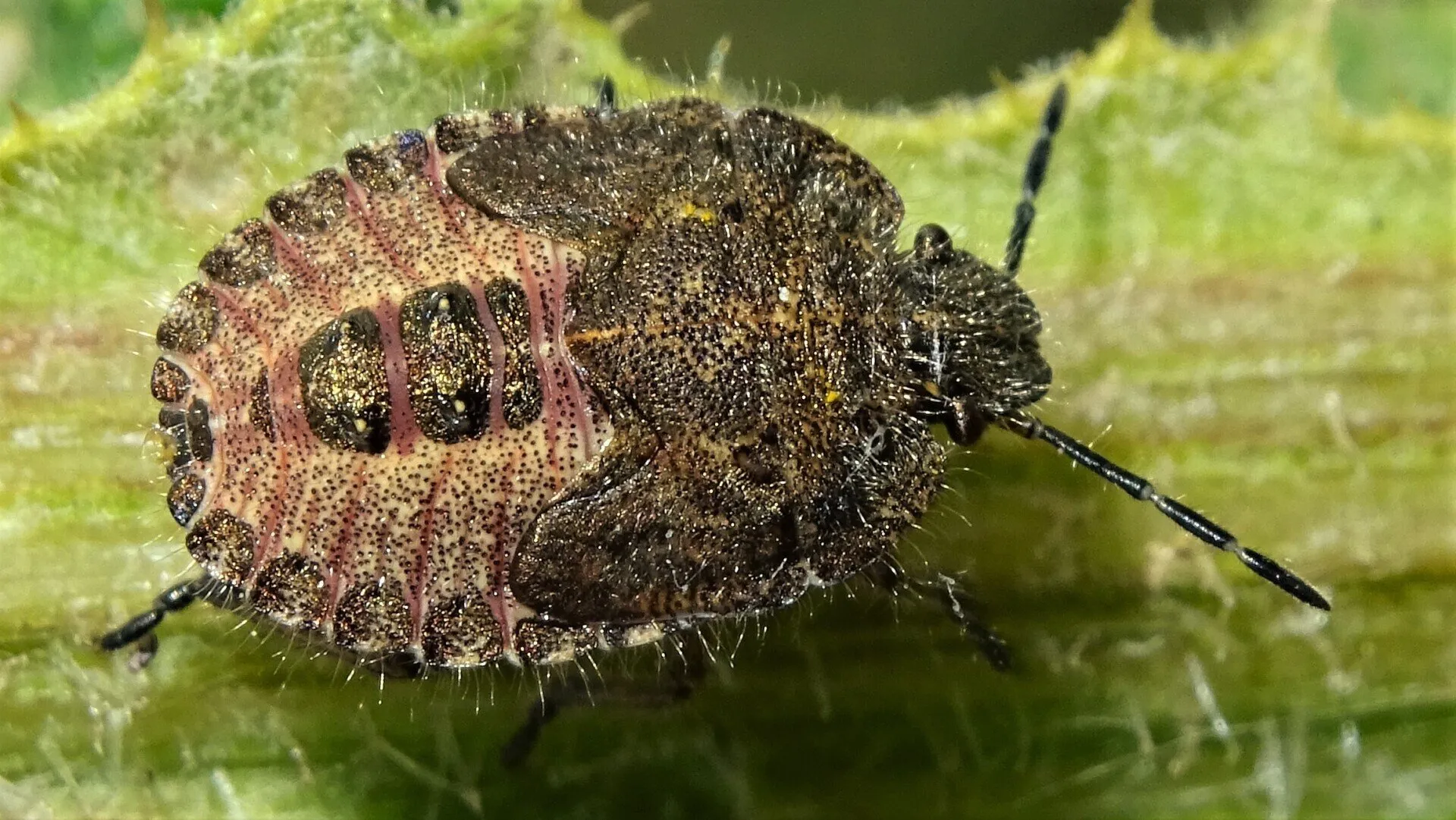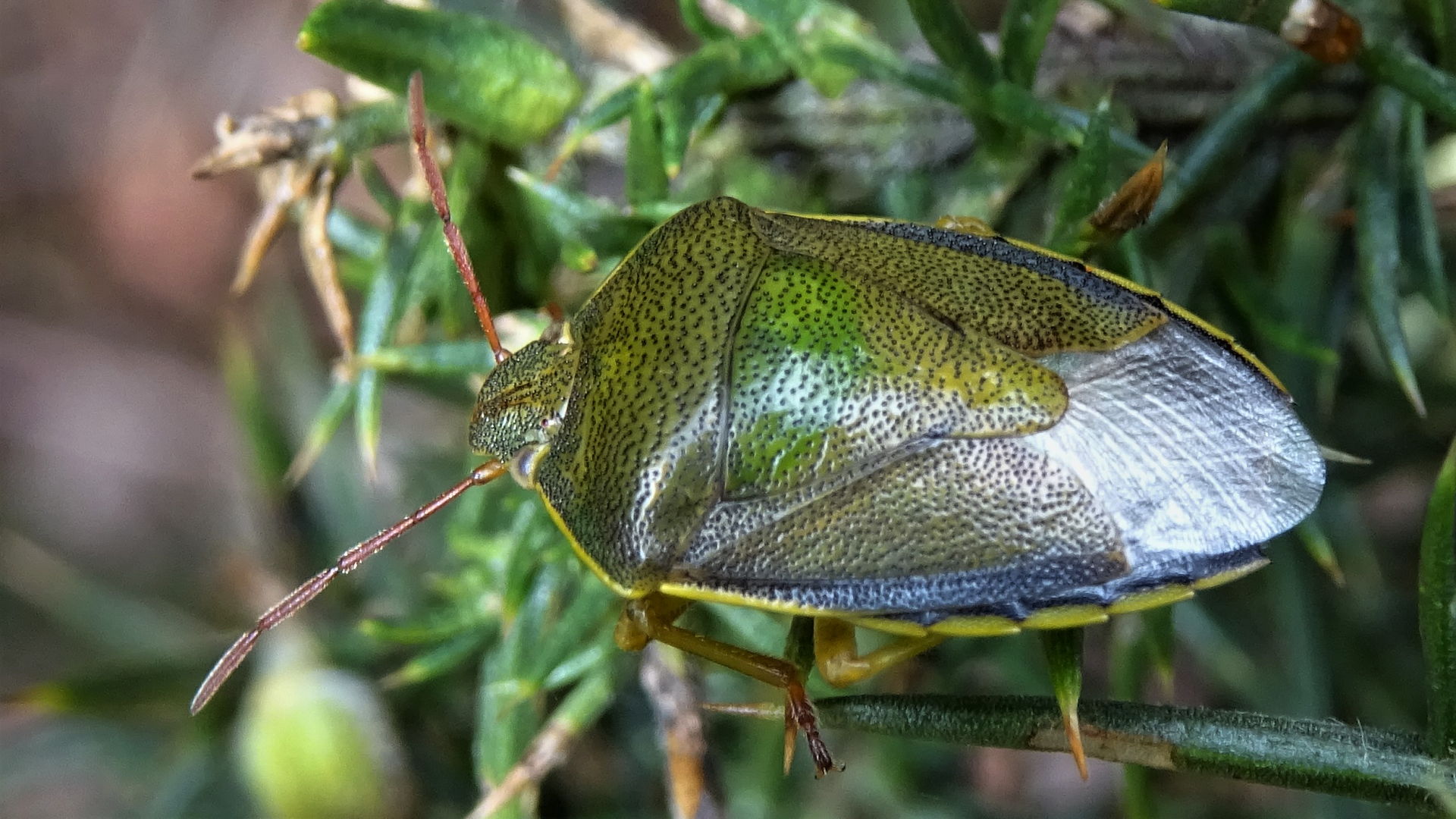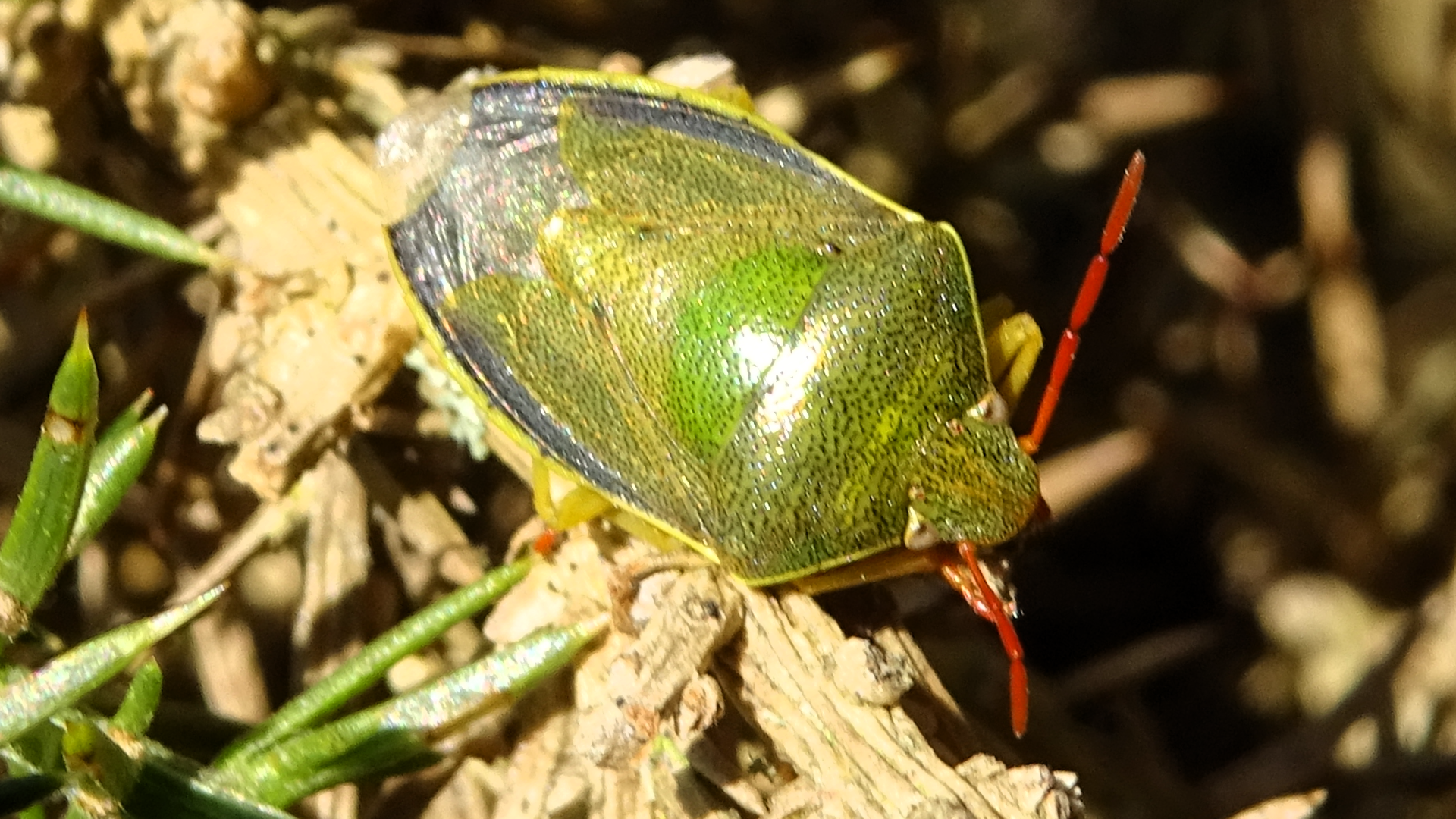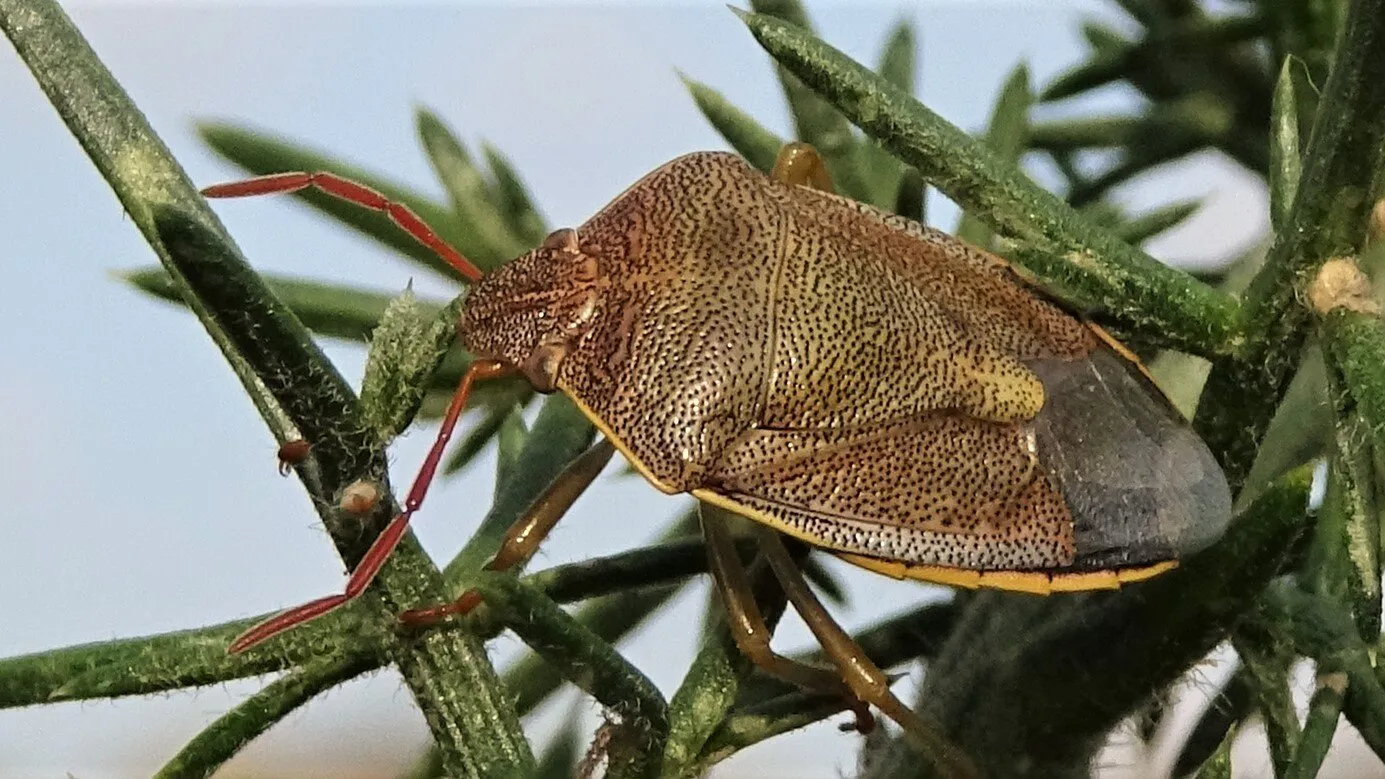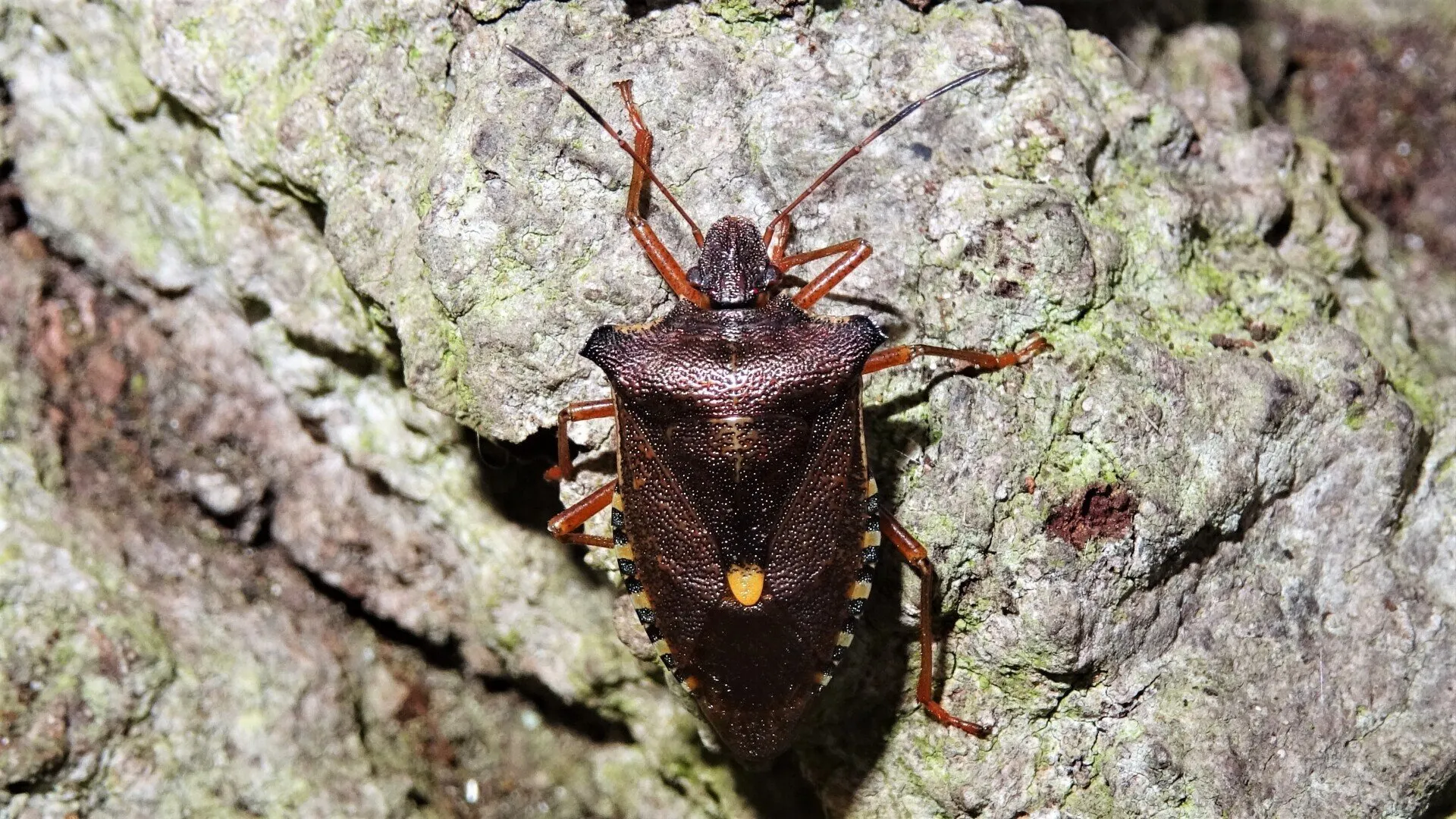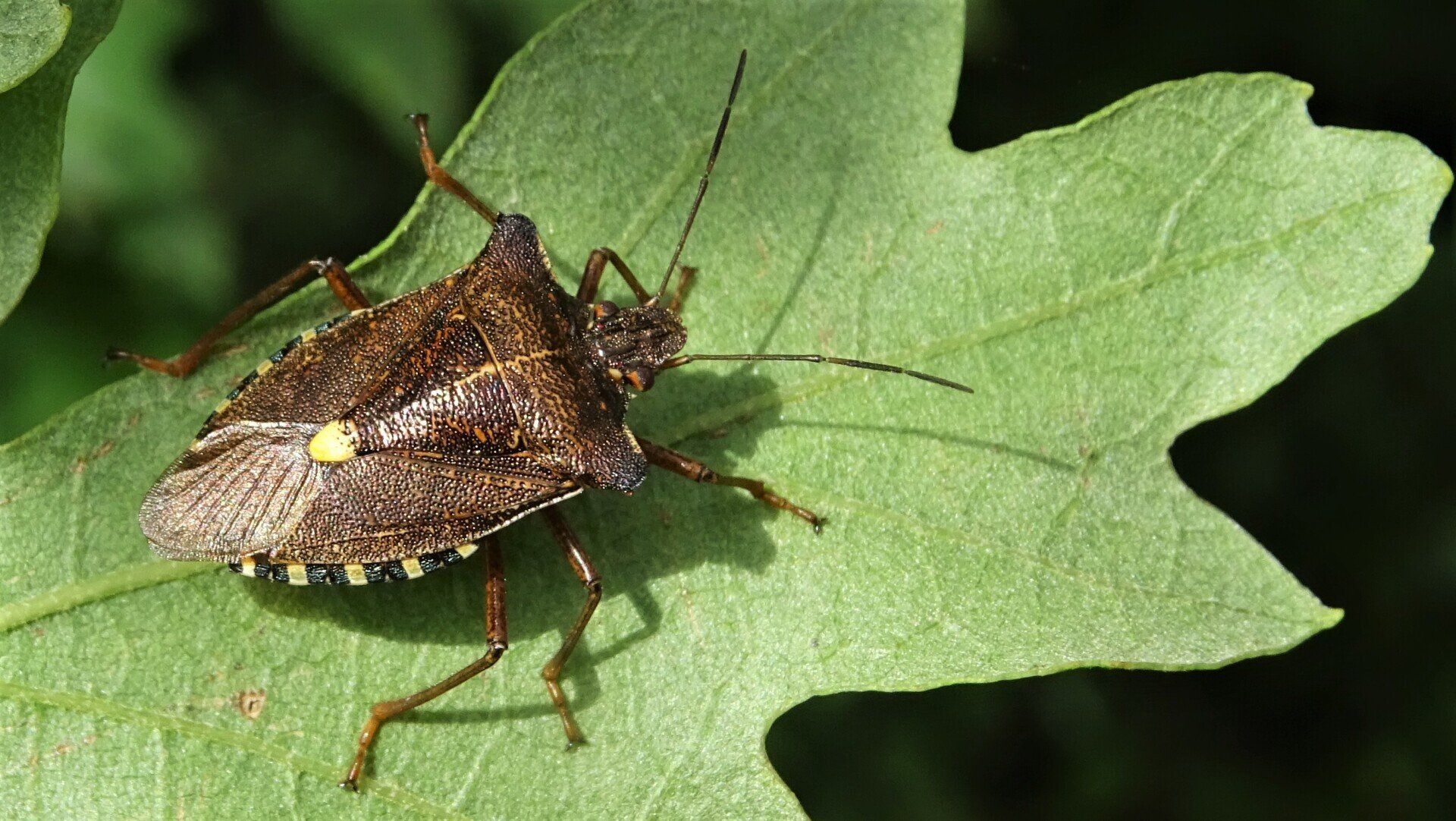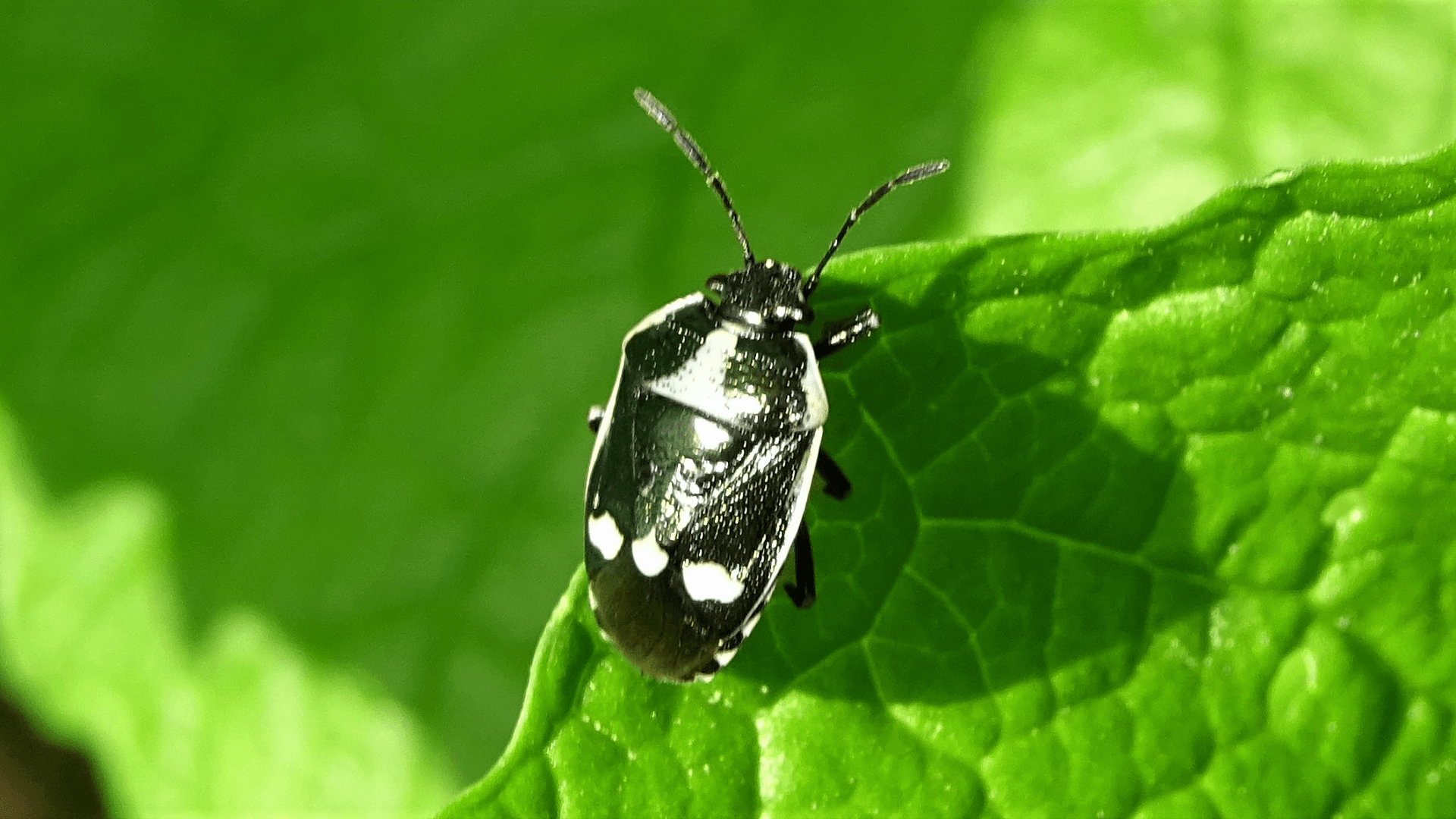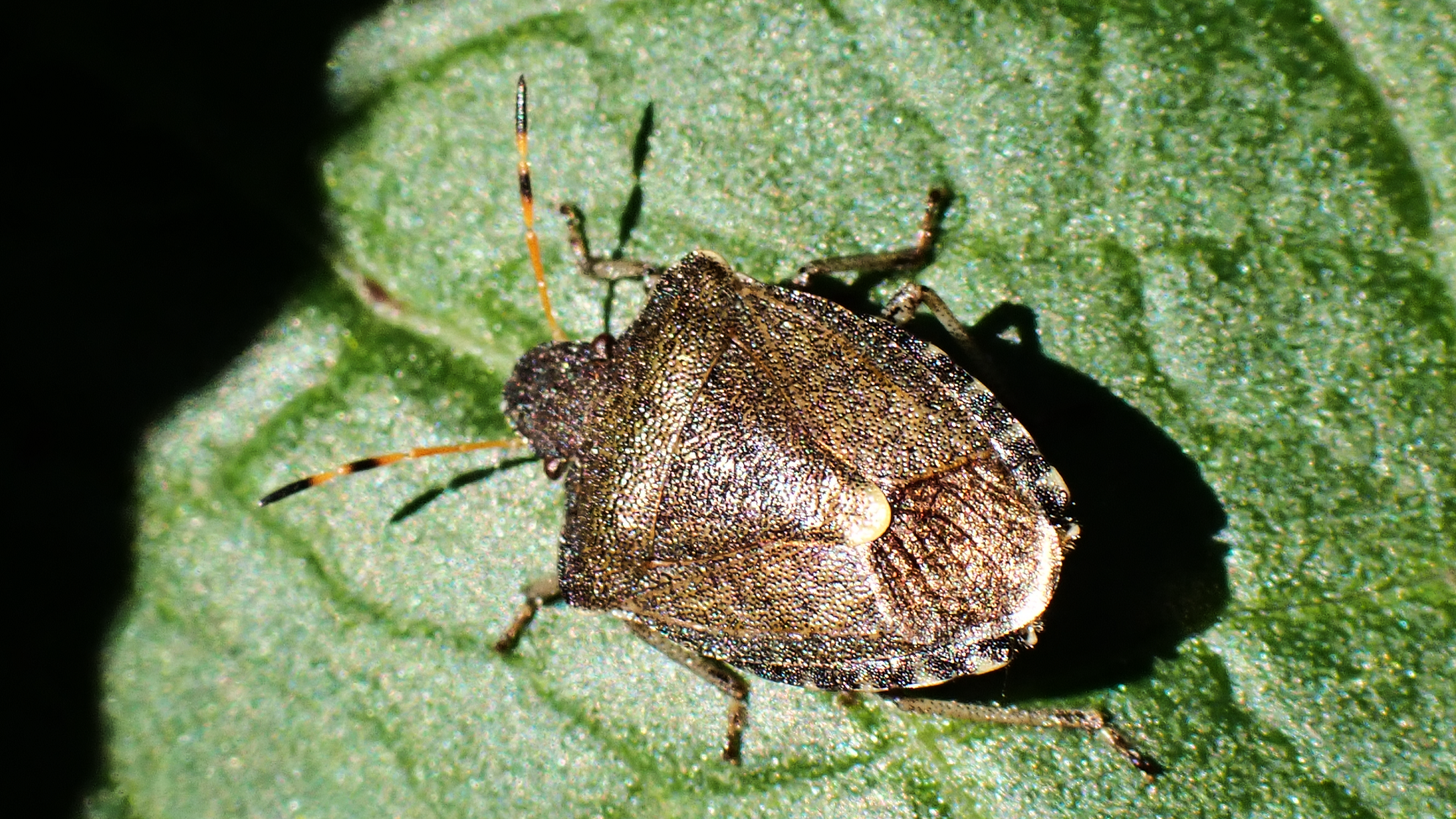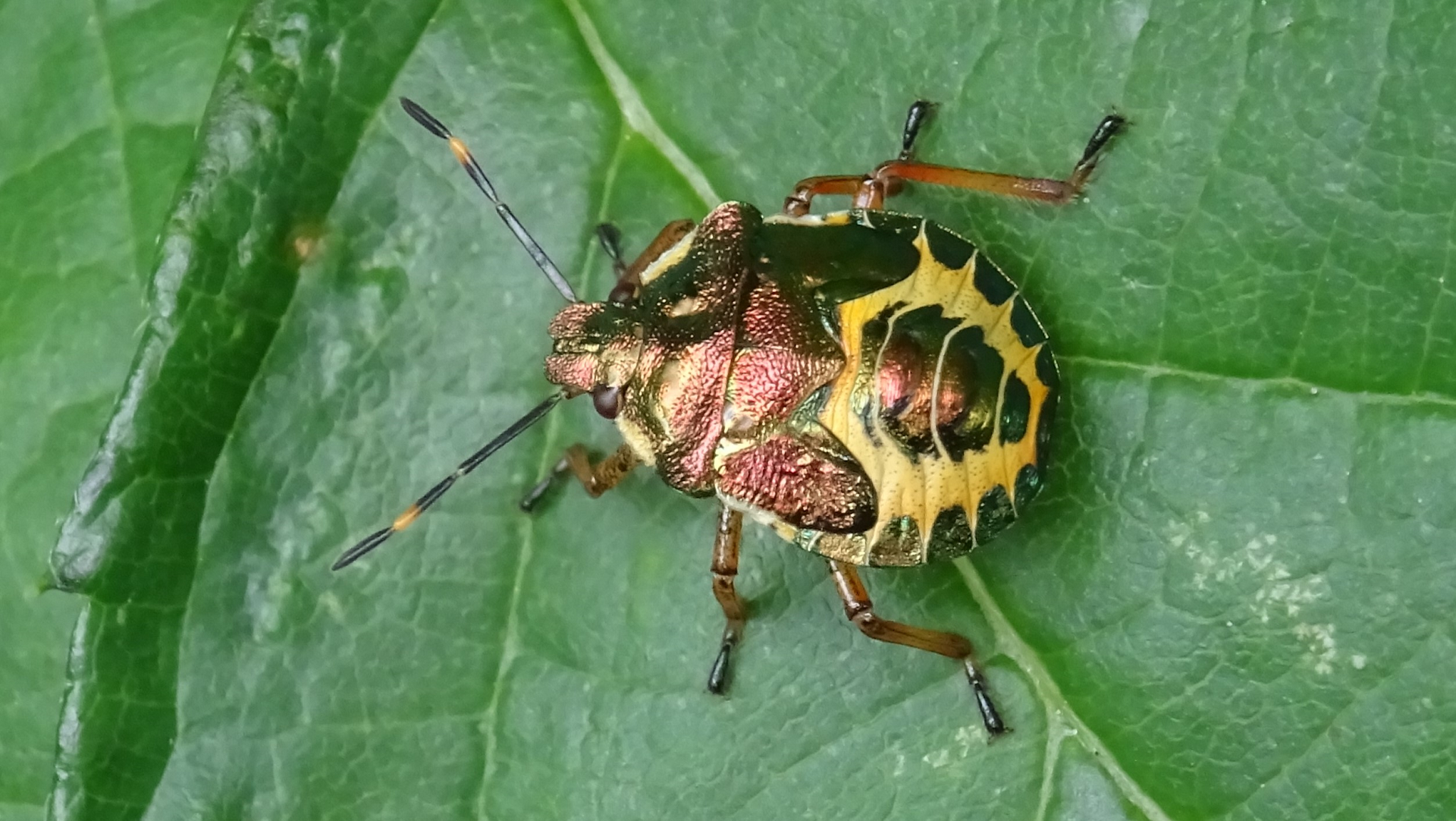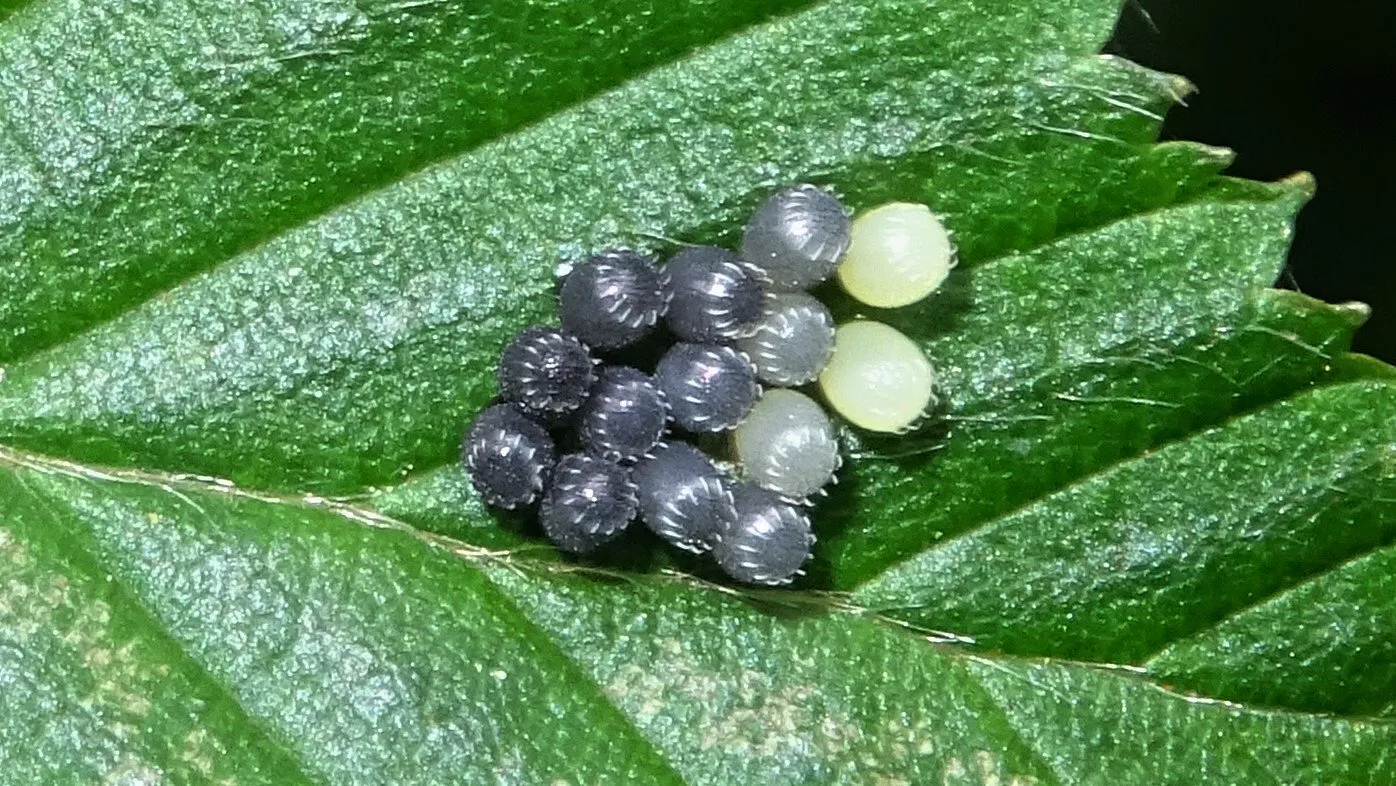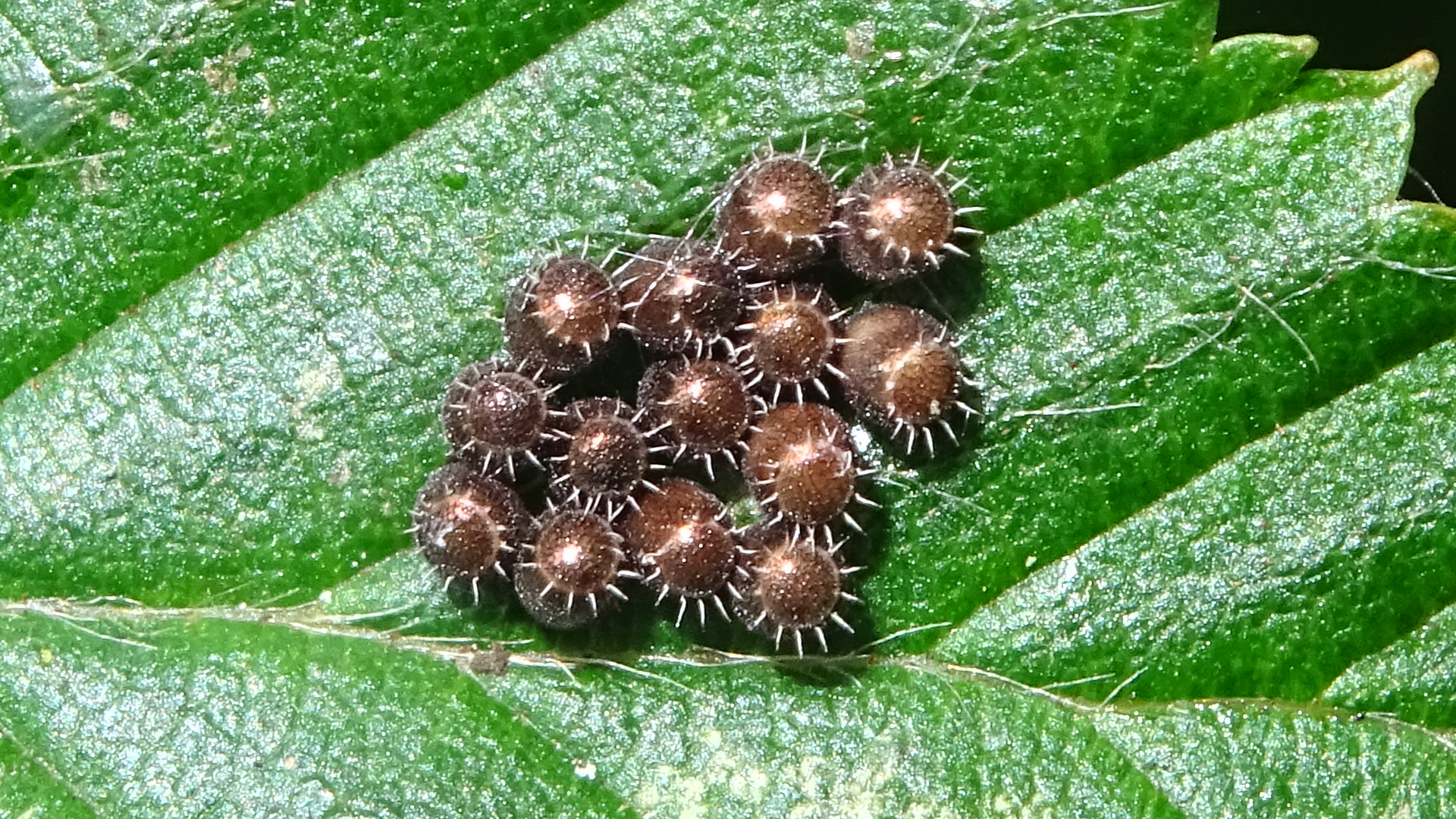INSECTS
HEMIPTERA / SHIELDBUGS
Shieldbugs bear a resemblance to beetles but have sucking mouthparts instead of mandibles. Behind the head there is an interconnecting plate known as the pronotum. Behind this is another plate called the scutellum that is usually shield-like in appearance from which the common name is derived. Shieldbugs have two pairs of wings that are folded flat over the back when not being used.
The Hawthorn Shieldbug is a distinctive species with lateral extensions of the pronotum that are marked with red, the scutellum is green and the abdomen is often red-tipped. Adults overwinter and emerge during spring to mate. The larvae mainly feed on hawthorn berries, but are sometimes found on other trees. The new generation is normally completed during autumn and the adults can turn darker prior to hibernation. Length 13-15mm.
The Birch Shieldbug is found in birch woodland. It is smaller than the Hawthorn Shieldbug and the lateral extensions of the pronotum are not marked with red. Adults overwinter and emerge in spring to mate. Birch is the main larval foodplant, but sometimes hazel and aspen are used as food sources instead. The new generation is complete by August. Length 8-11.5mm.
The Parent Bug has a black and white connexivum and there is usually a black patch on the scutellum. Adults overwinter and emerge in spring to mate. Soon after mating the male dies leaving the larger female to tend the eggs and young larvae. Instars can sometimes be found grouped on the underside of an alder and birch leaves. Birch and alder are larval foodplants. New adults appear from August onwards. Length 7-9 mm.
Markings and ground colour vary on the Tortoise Shieldbug. There is a noticeable central depression at the front of the head. The nymphs feed on various grasses. Length 9-11 mm.
The Pied Shieldbug is a ground-dwelling species that feeds on White dead-nettle and Black horehound. The females cares for her eggs. Length 5.5-7.5mm.
The Turtle Shieldbug mainly dwells on the ground. Iy has a long tongue-like scutellum which reaches the rear of the abdomen and two small projections on the pronotum at each side of the head. Adults mate and lay eggs in spring and early summer. The larvae feed on various grasses. Length 5-6 mm.
The Bishop's Mitre has a pointed head, striped body and ridged pronotum. It can be found throughout the year in tall dry grassland. Mating and egg-laying occurs during spring and summer. The larvae feed on the ripening grass seed. New adults appear in autumn. Length 8-9 mm.
The Woundwort Shieldbug is a small greyish-bronze species, 5-7 mm in length, found on hedge woundwort and occasionally black horehound and nettles. The head, front of the pronotum and scutellum are copper coloured, while the connexivum is decorated with black and white.
During spring and summer Common Green Shieldbug adults are bright green, finely punctured with dark spots. The antennae has reddish segments and there is a dark wing membrane. As winter approaches this species turns darker. The nymphs are seen from June until October on a variety of deciduous trees and shrubs on which they feed. Nymphs that appear early in the year are normally lighter than those seen later. Adult length 12-13.5 mm.
The Hairy Shieldbug is covered in long hairs. It is found throughout the year along woodland rides and on hedgerows. This species overwinters as an adult and emerges during spring to mate. Larval foodplants include Blackthorn and other members of the Roasaceae family. Also known as the Sloe Bug.
Gorse Shieldbug adults that emerge and mate during spring are mainly green, while the new generation appearing late summer have purplish-red markings. They usually become darker before hibernation. Mainly found where European gorse is present. Length 10-13 mm.
The Red-legged Shieldbug has orange/reddish legs and slightly hooked projections at the front of the pronotum. The spot at the tip of the scutellum ranges from orange to cream. Adults are omnivorous, feeding on fruits and insects. New adults are generally seen from July until November, with eggs being laid in August. This species overwinters as young nymphs. The nymphs feed mainly on Oak. Also known as the Forest Shieldbug. Adult length 11-14 mm.
Markings on Brassica Bugs (aka Cabbage Bugs) vary in colour and may be red, yellow, white or orange. This species overwinters as adults and emerges in spring to mate. Larvae generally appear from May to July and can be found on garlic mustard and other plants in the Cabbage family. Length: 6-7mm.
The Bronze Shieldbug is a large predatory woodland insect measuring 10-12mm in length. The penultimate antennal segment is orange banded and the legs are brown. There is one generation each year. Once hatched the nymphs feed on plants as well as other insects, especially caterpillars. The next generation of adults usually appear from July onwards.
© hainaultforest.net. All rights reserved.


